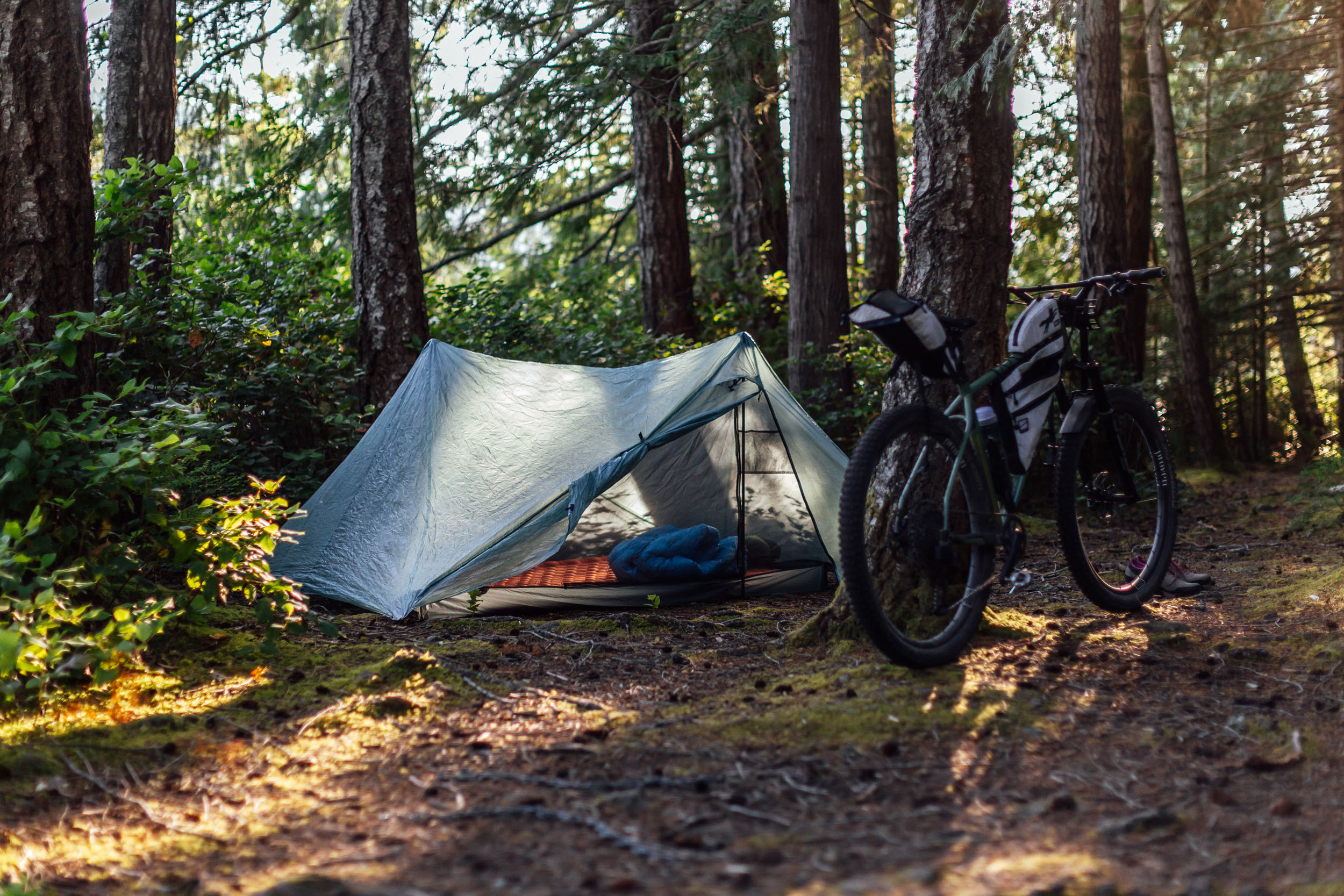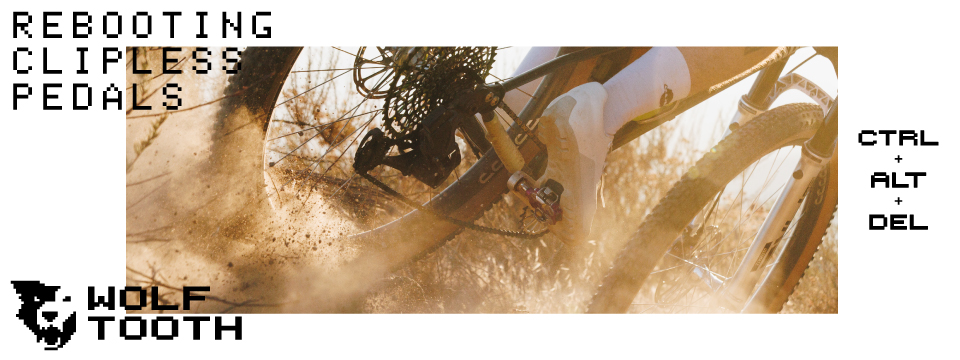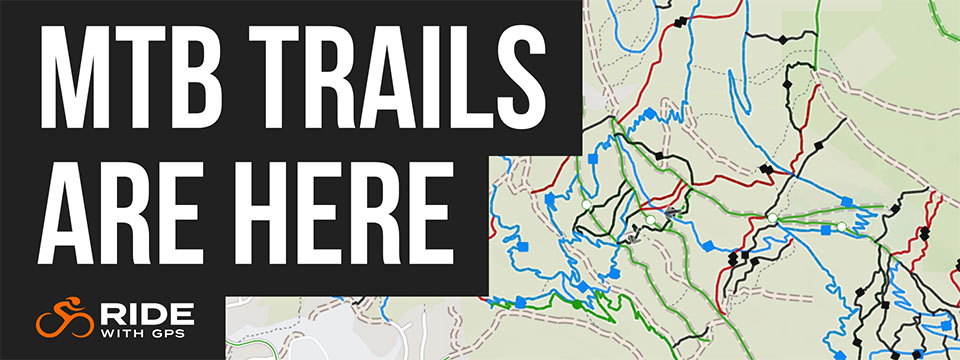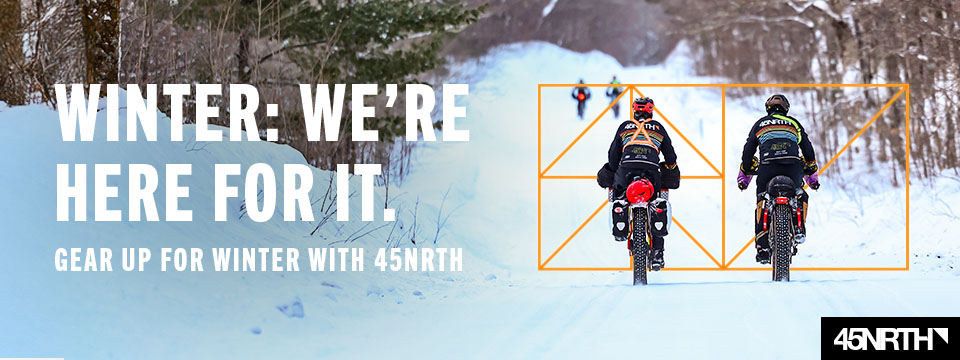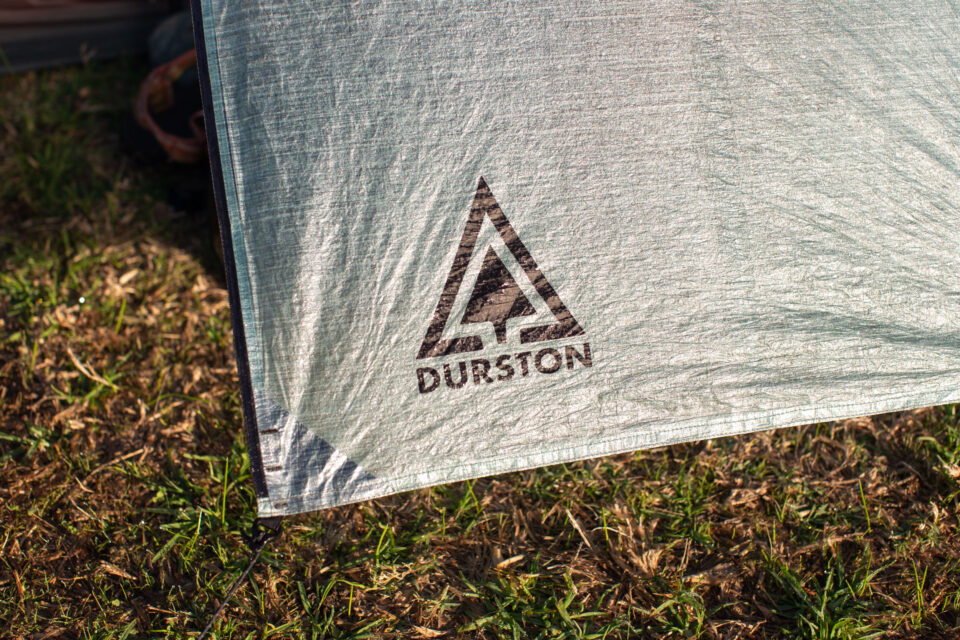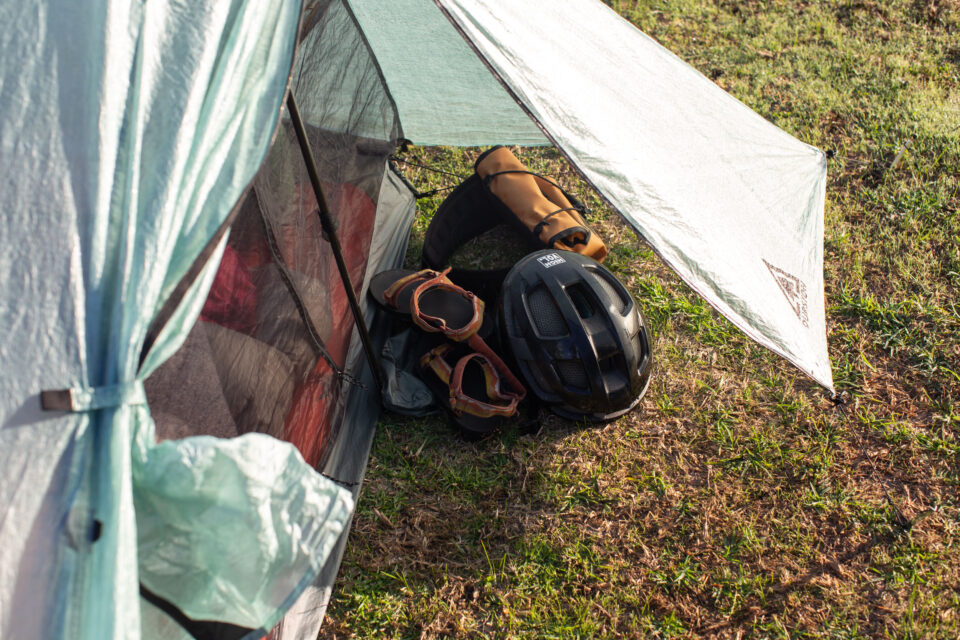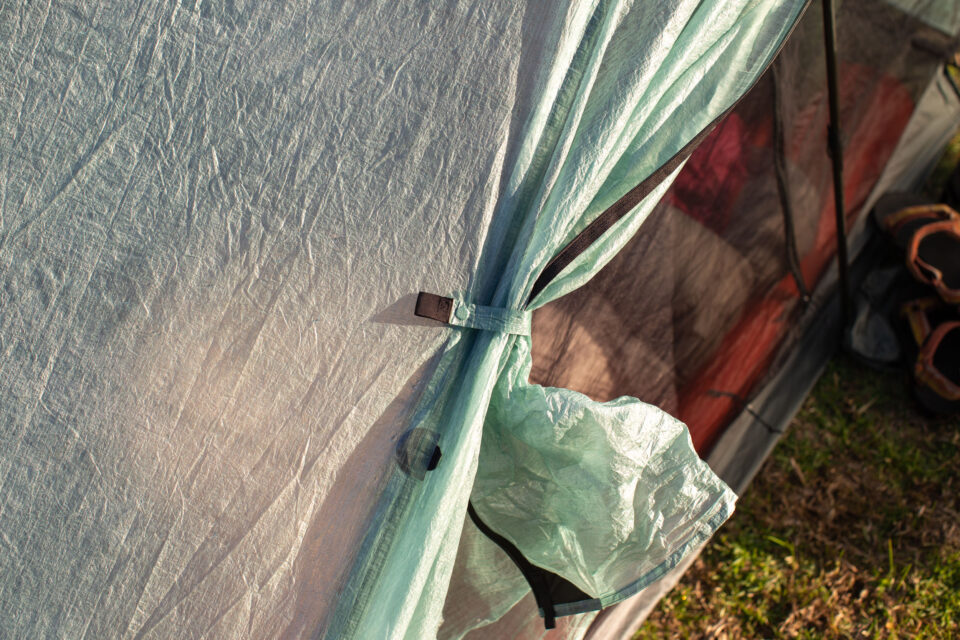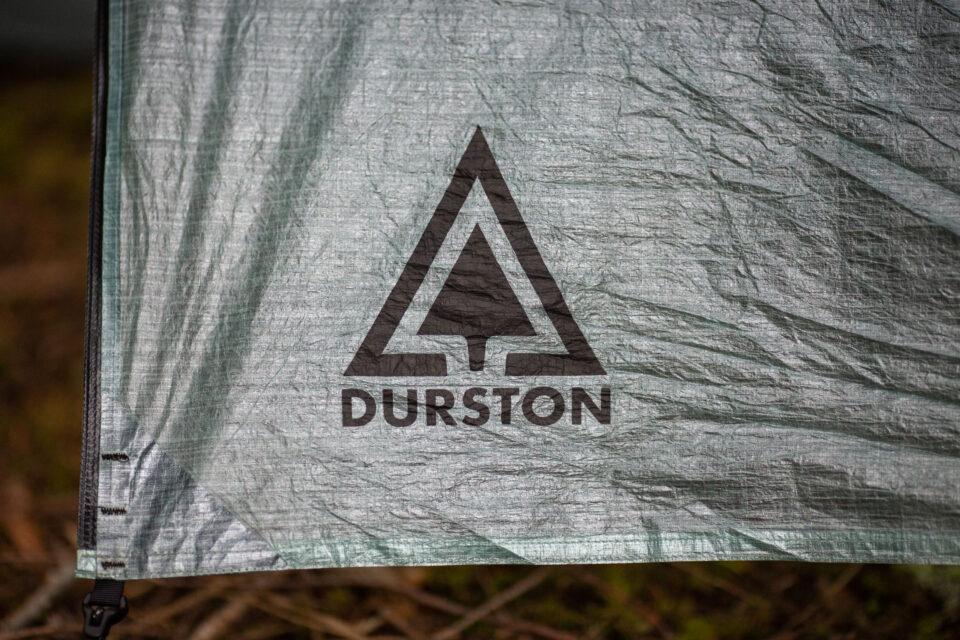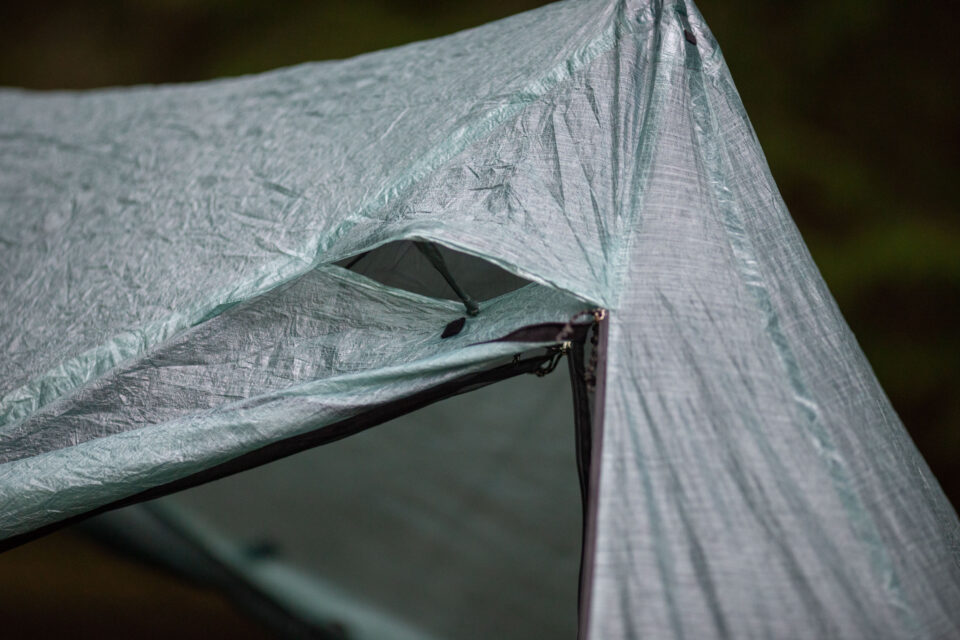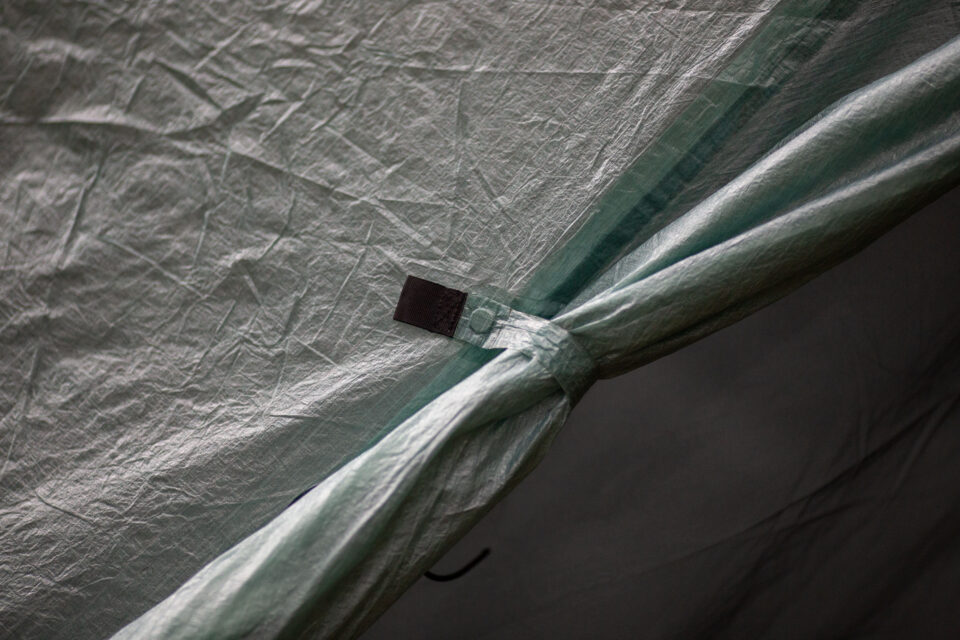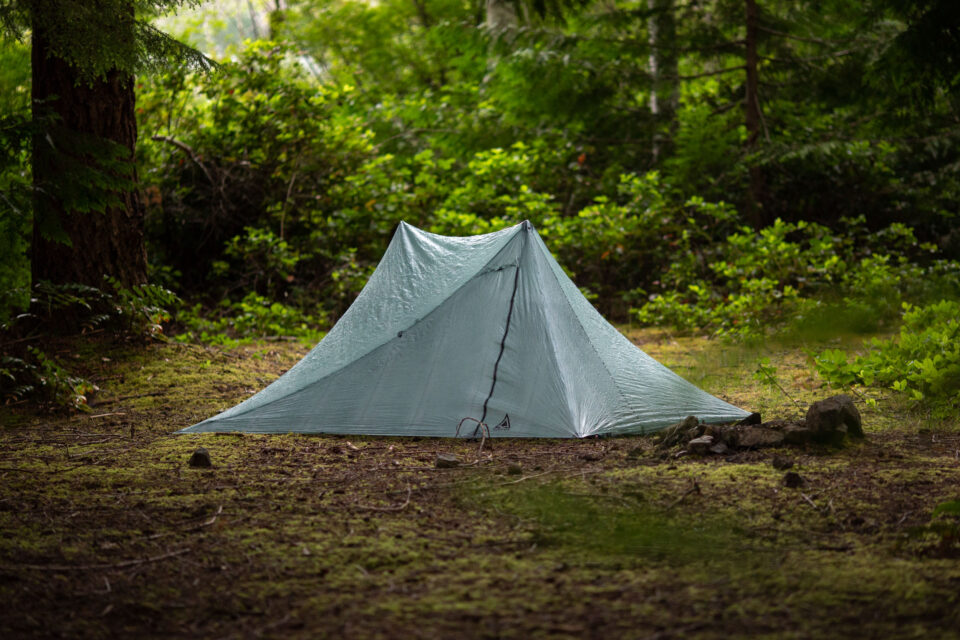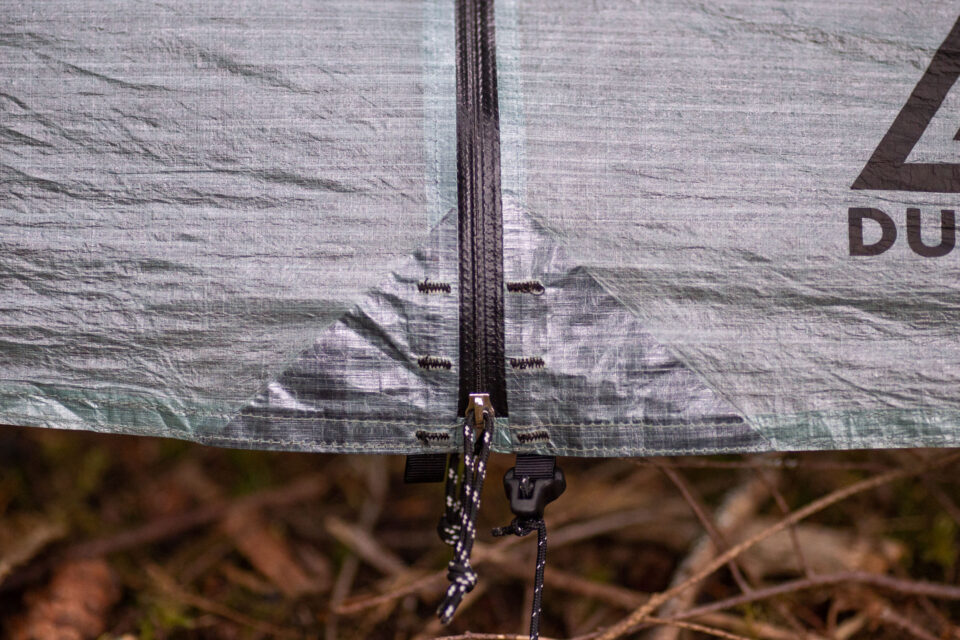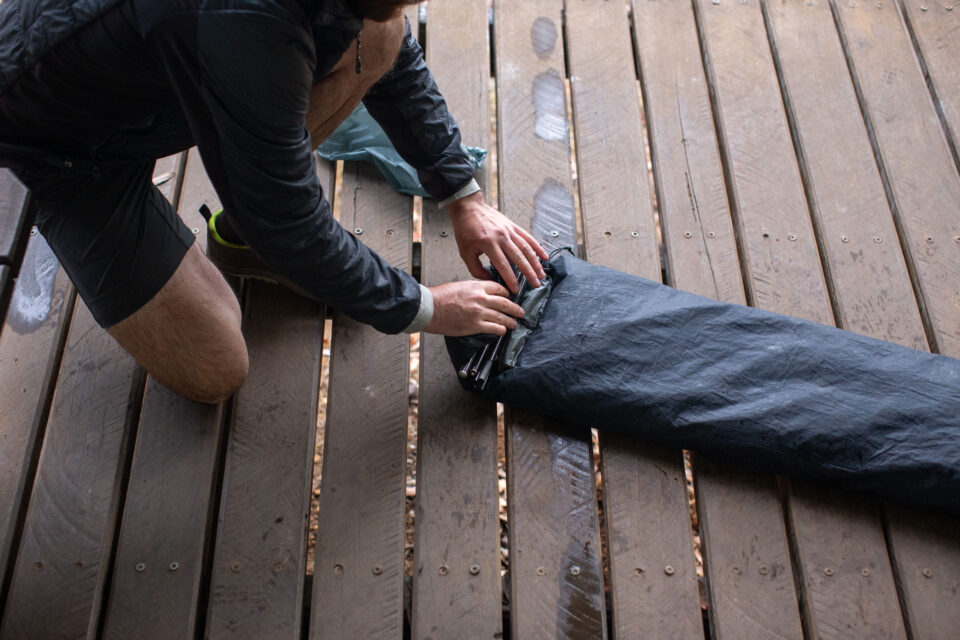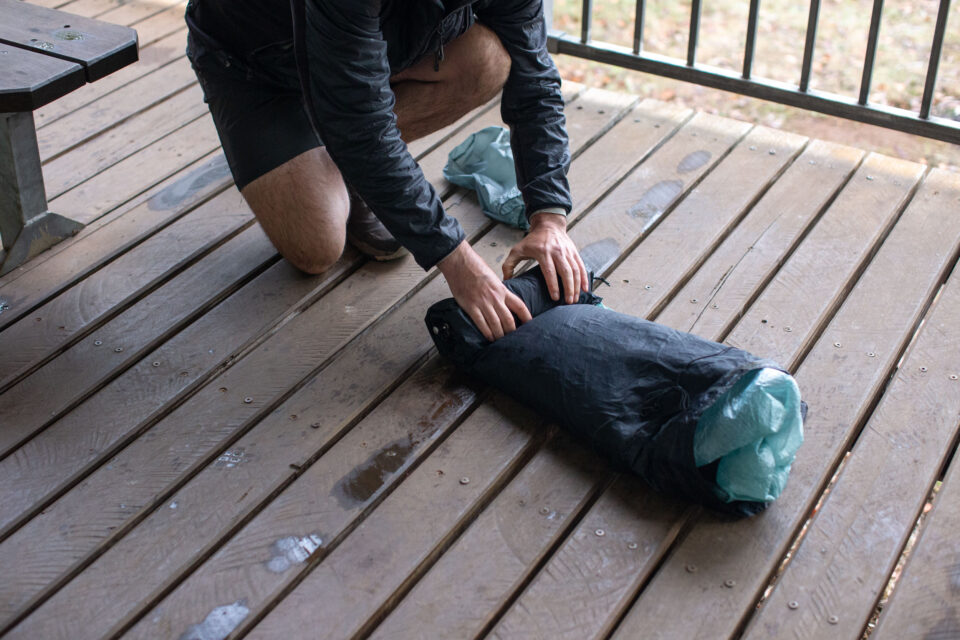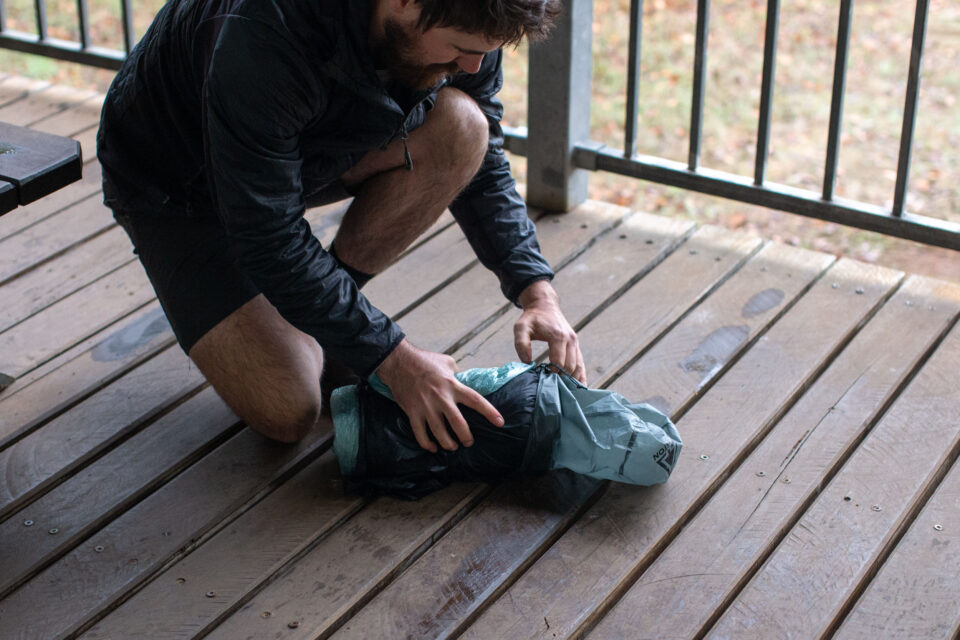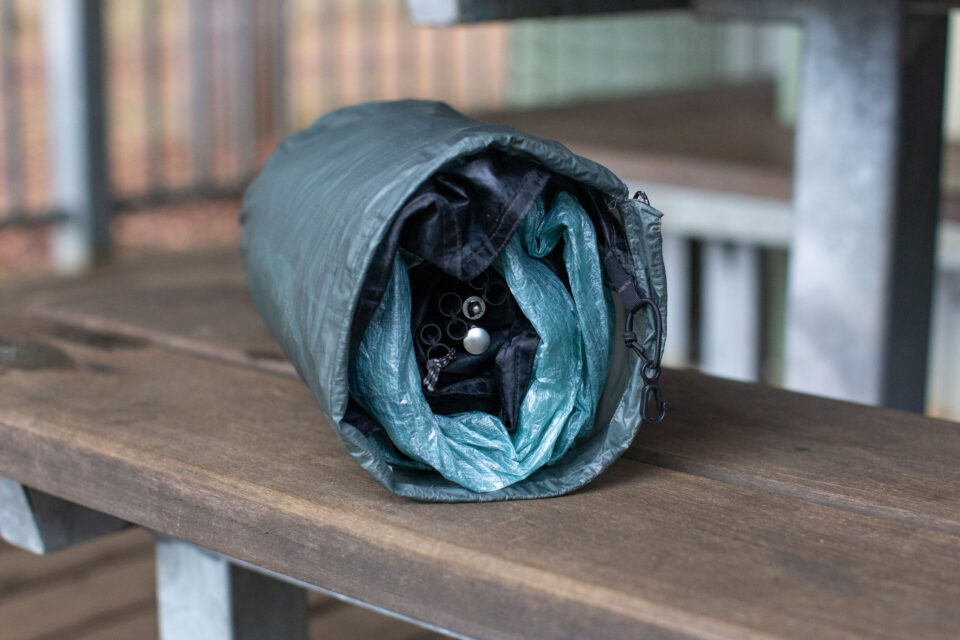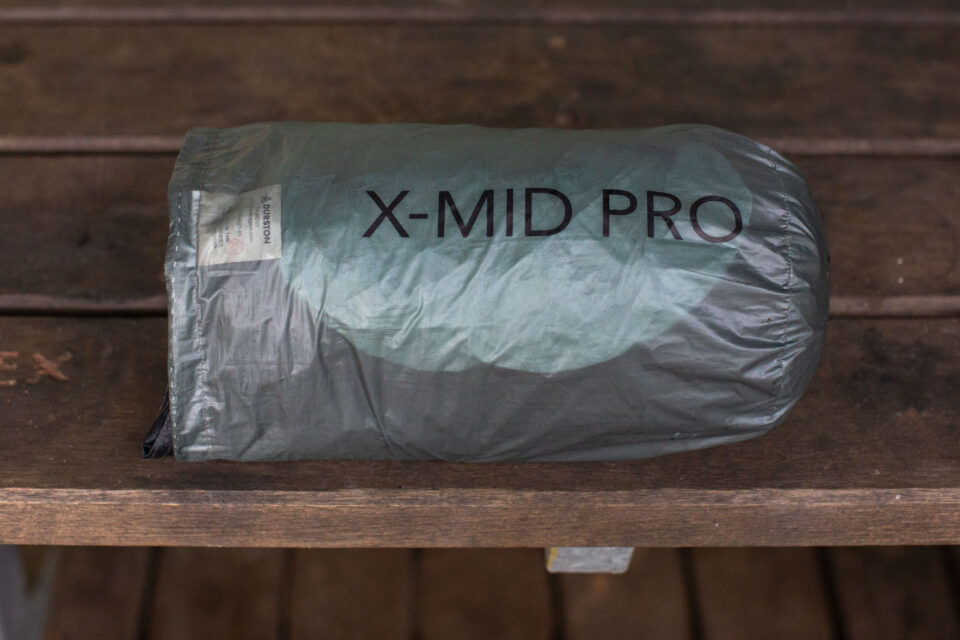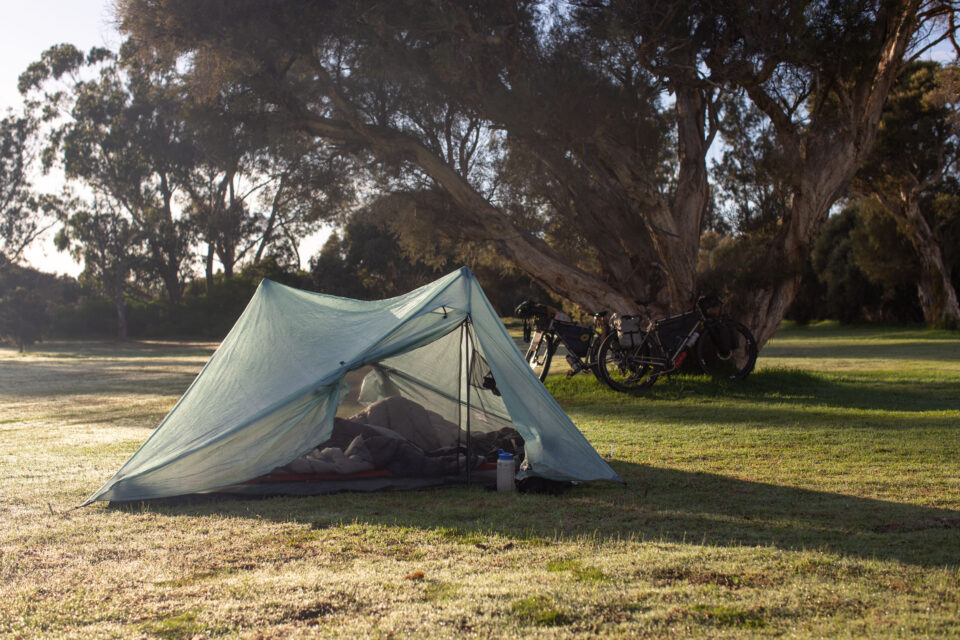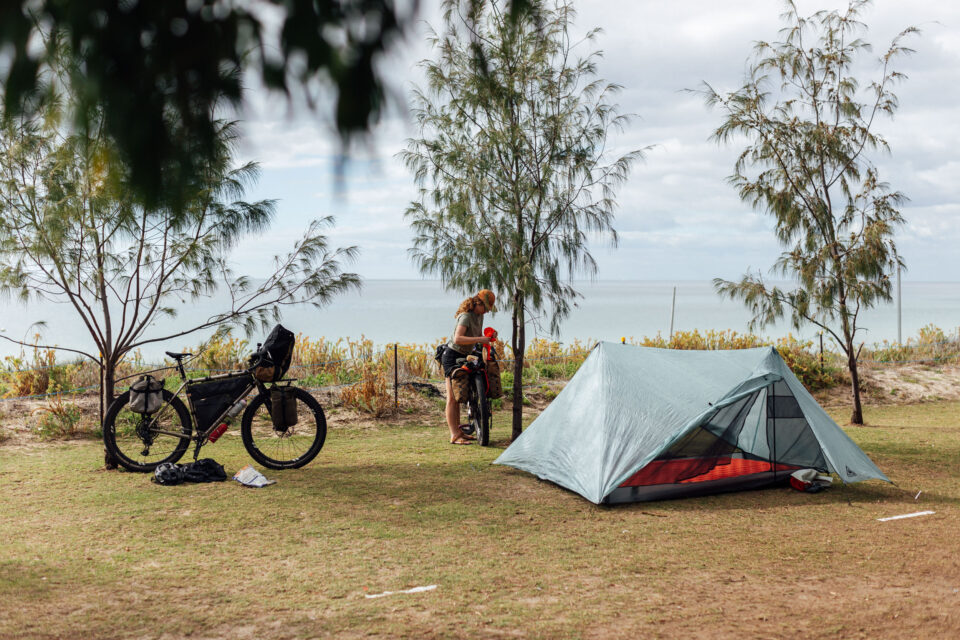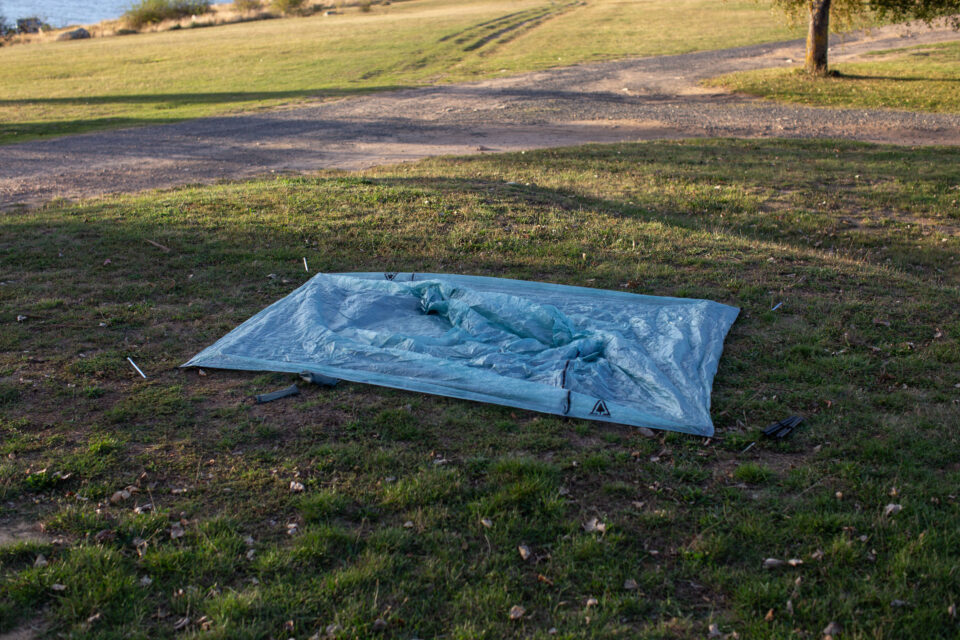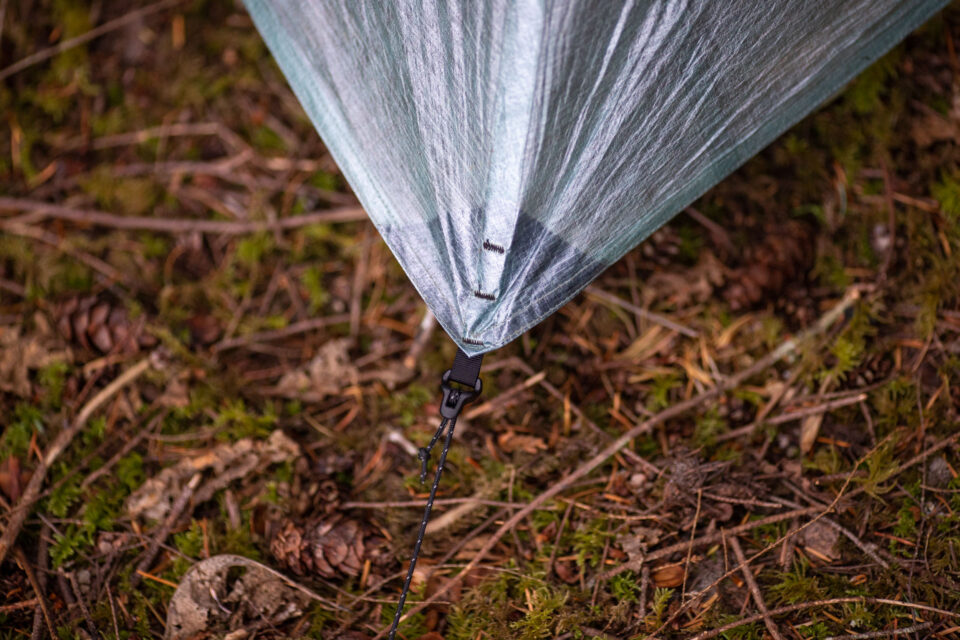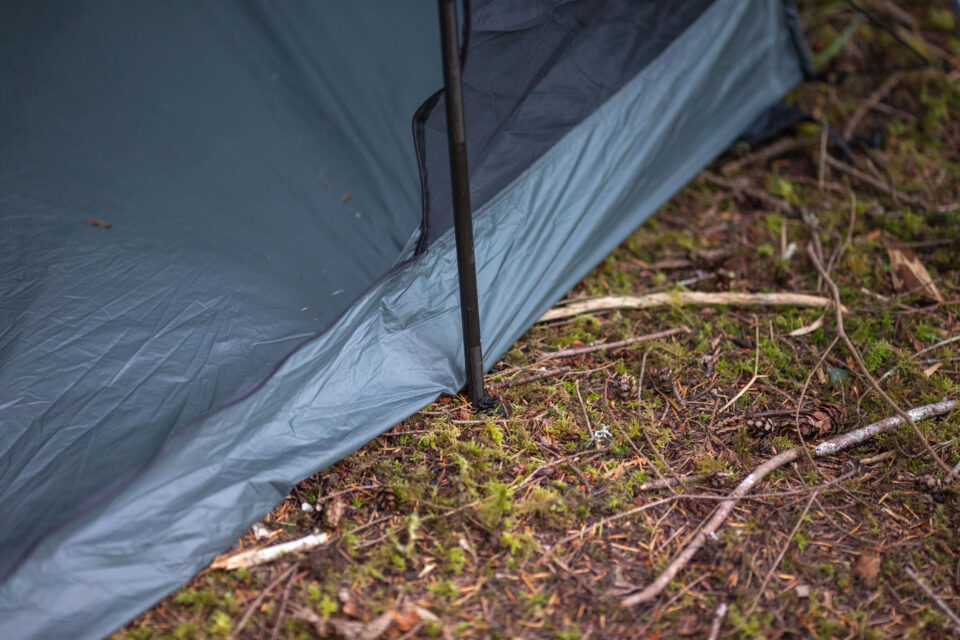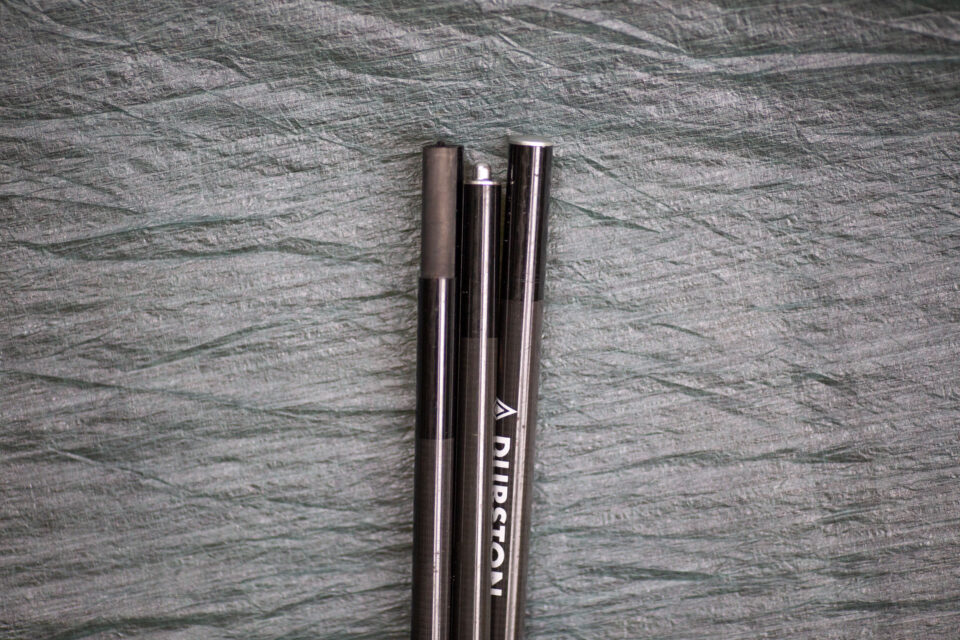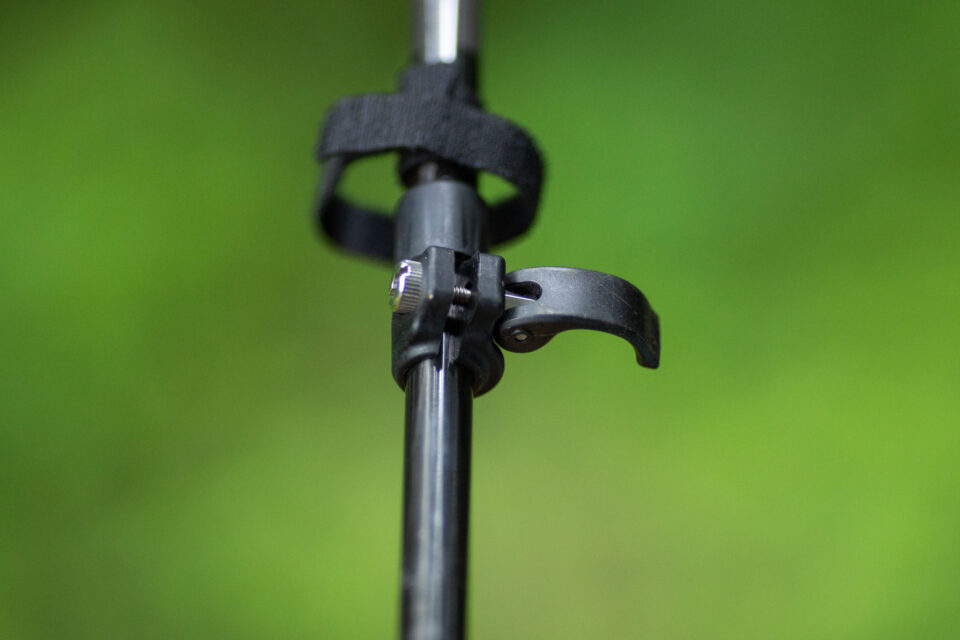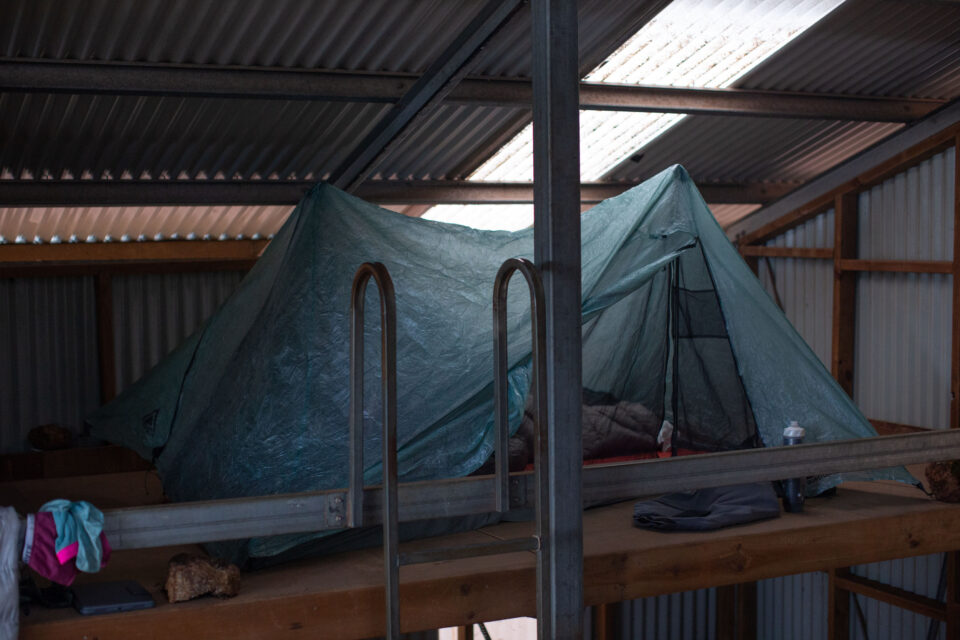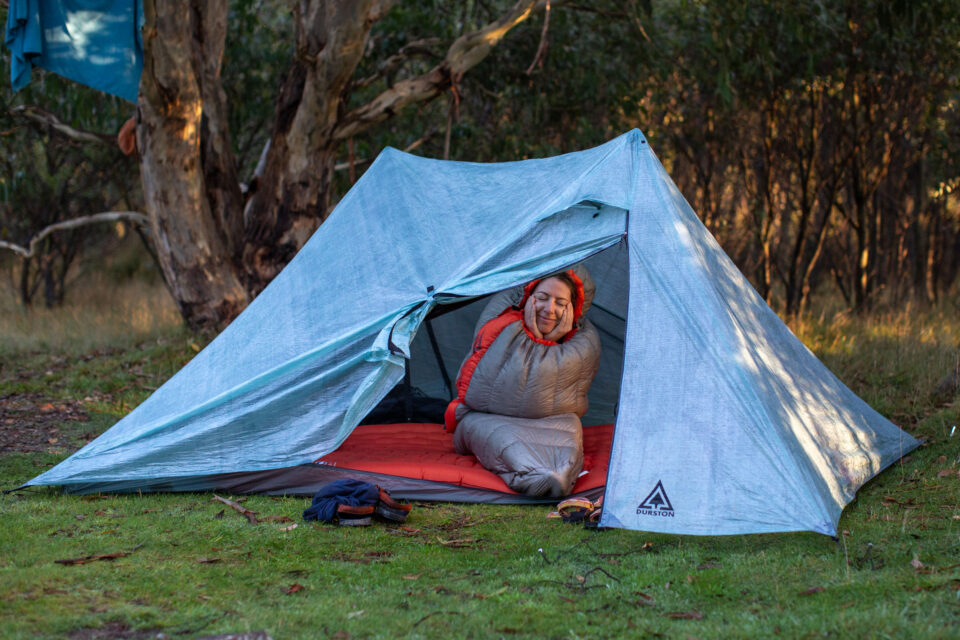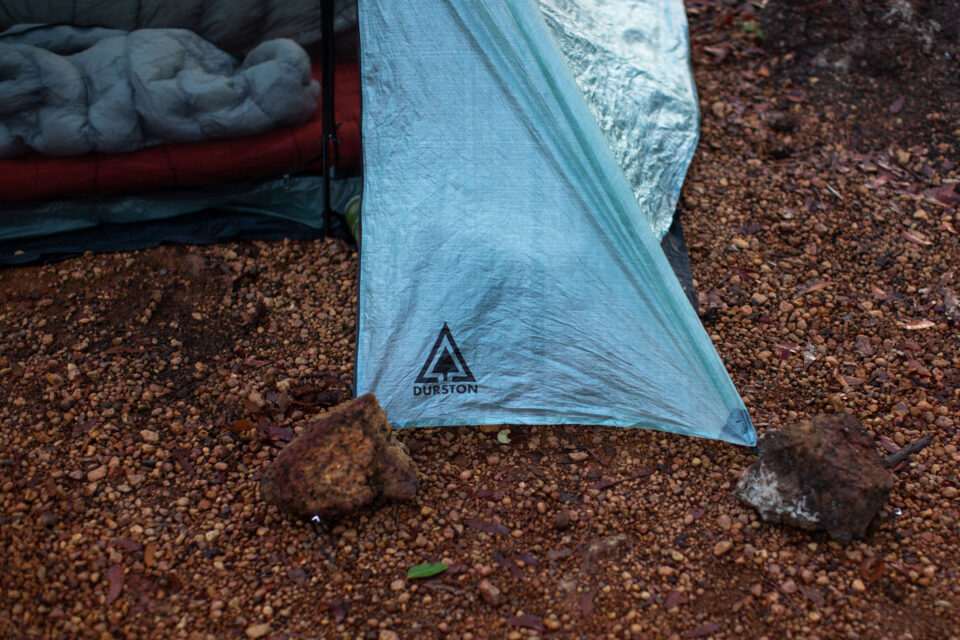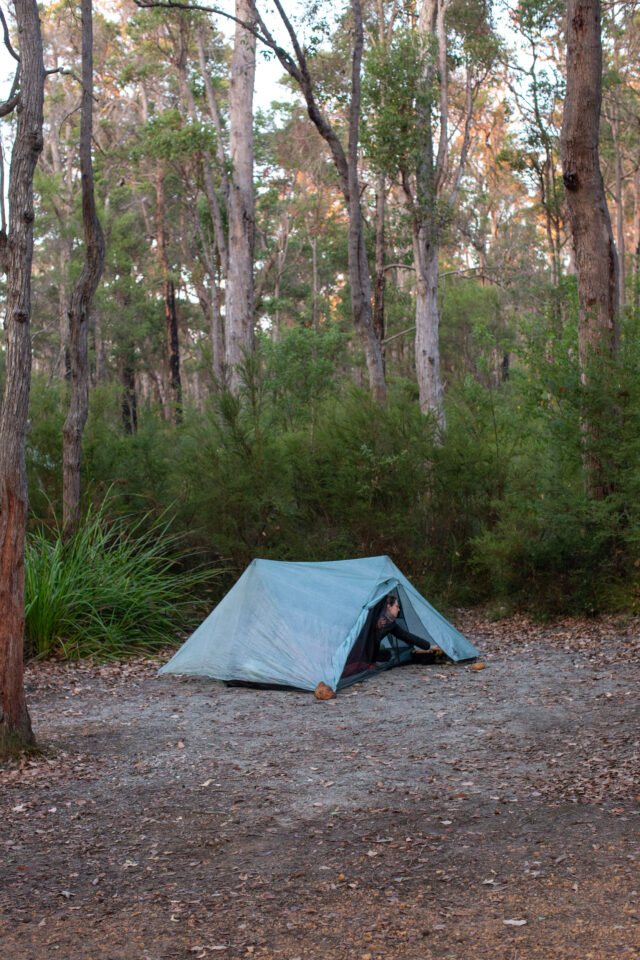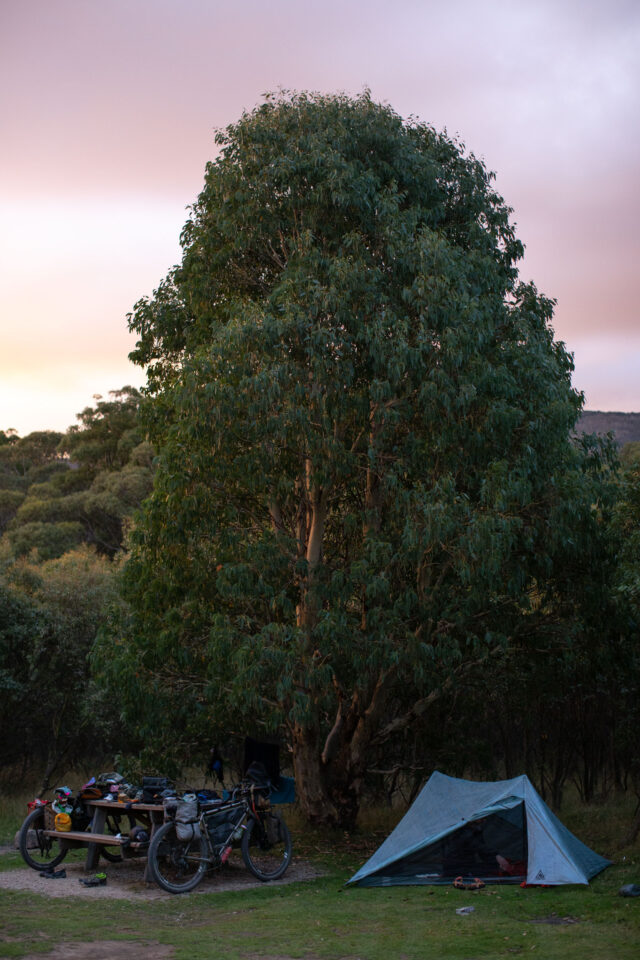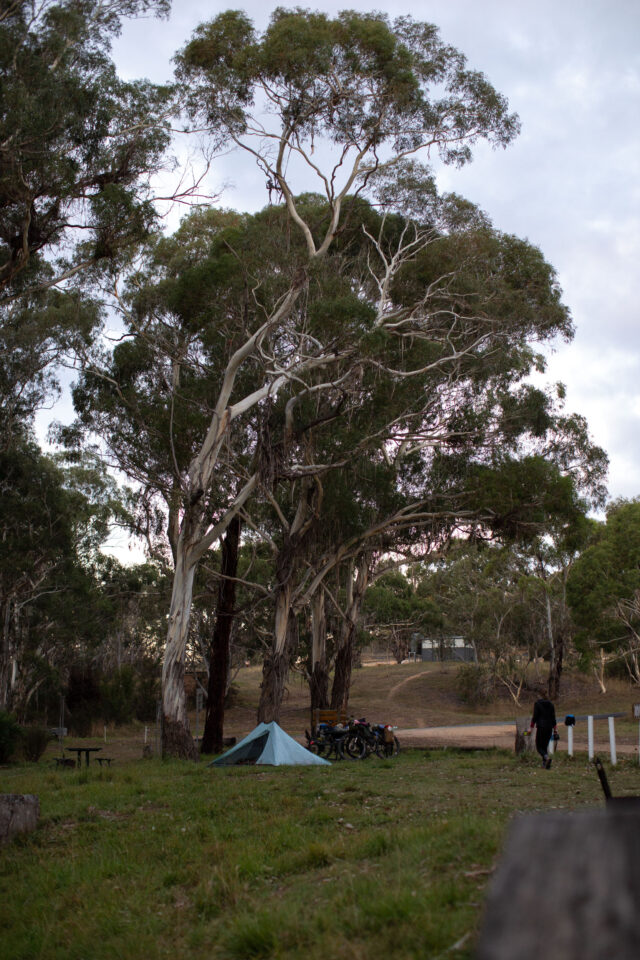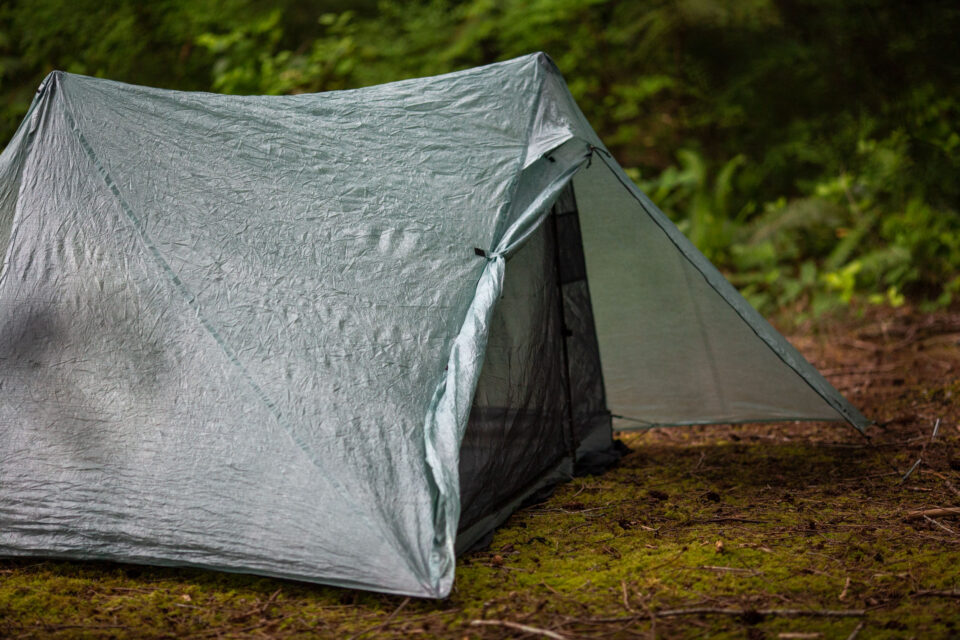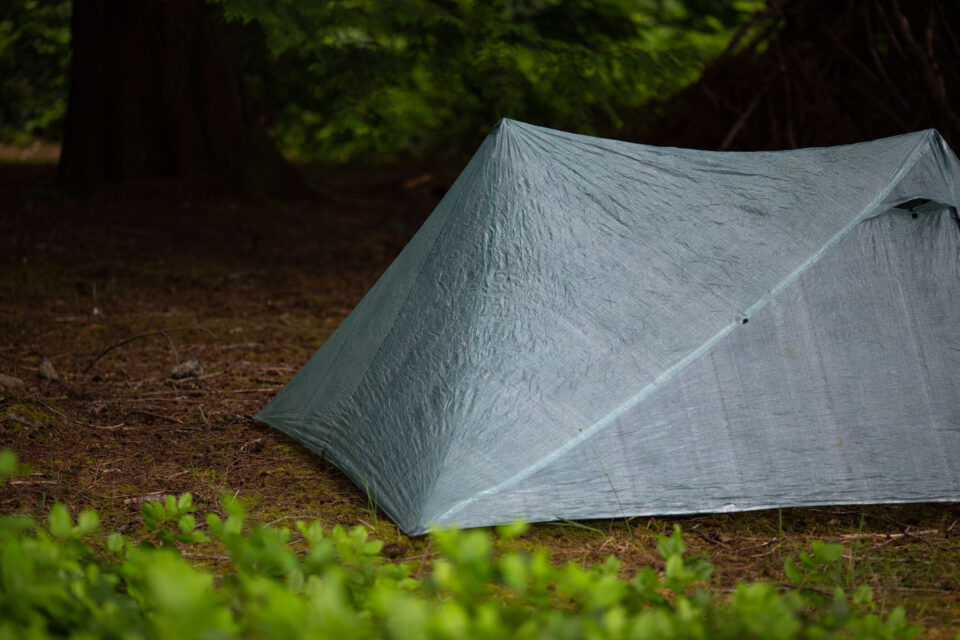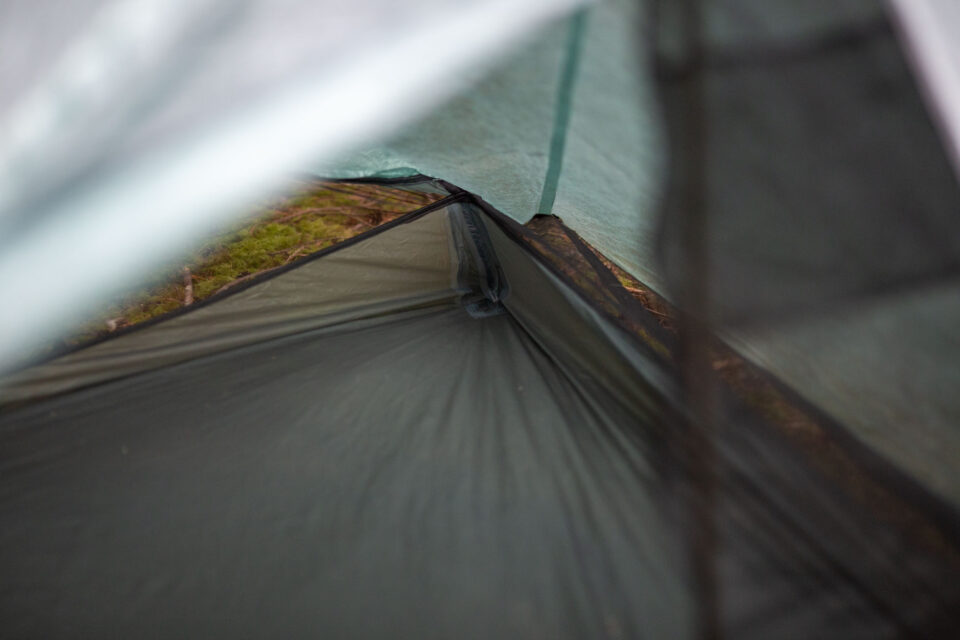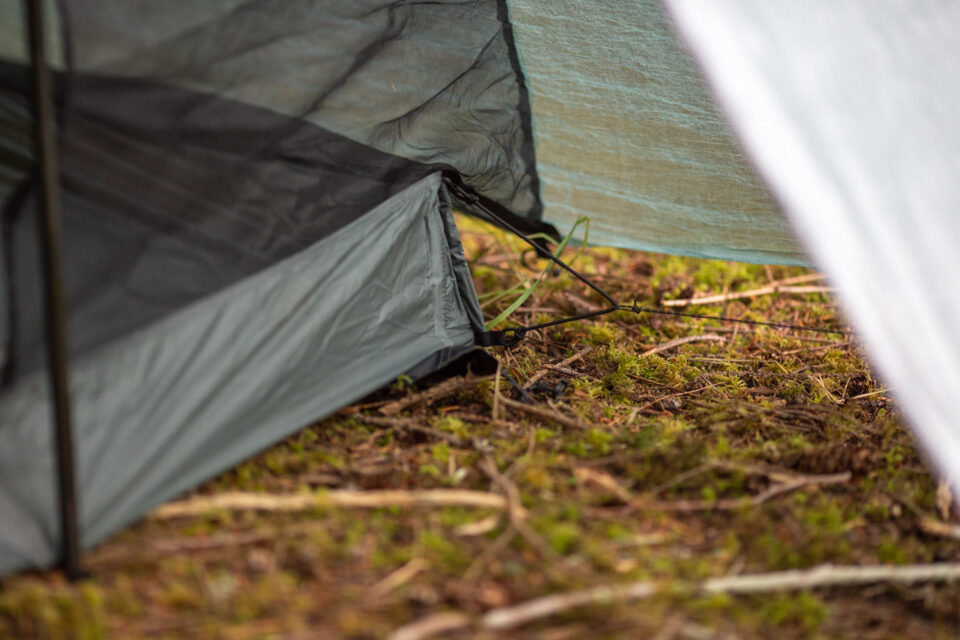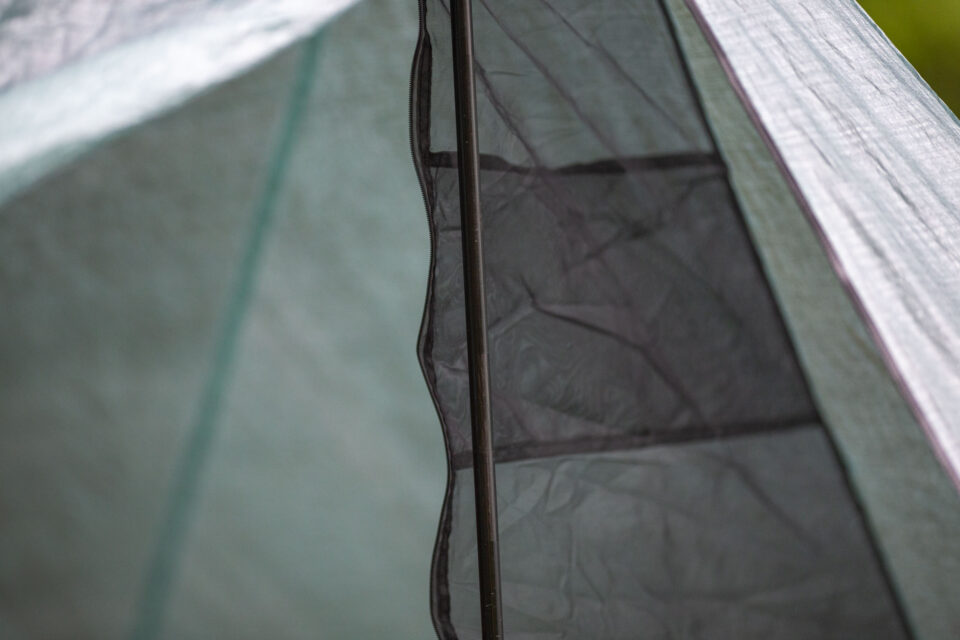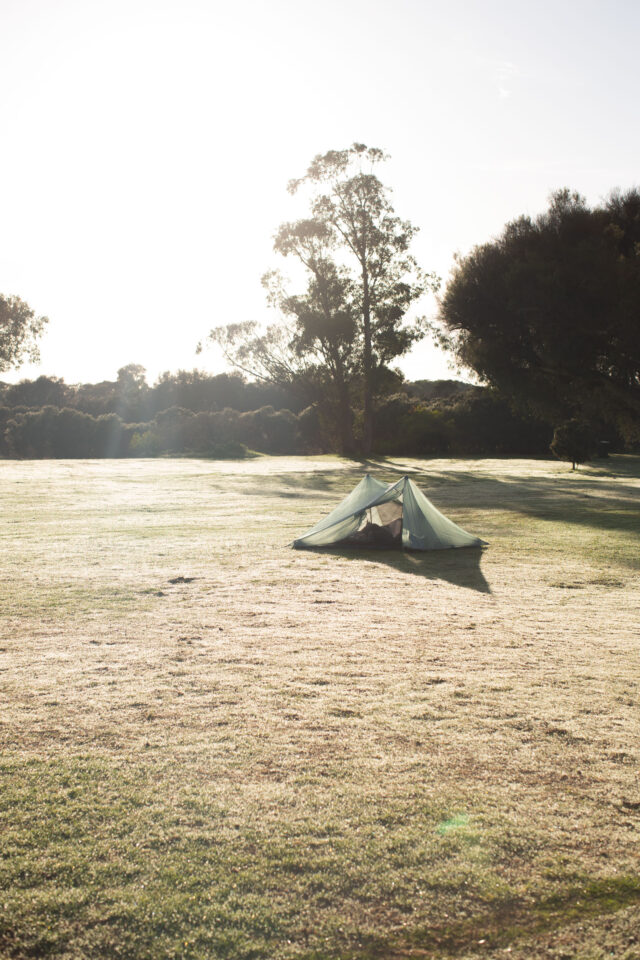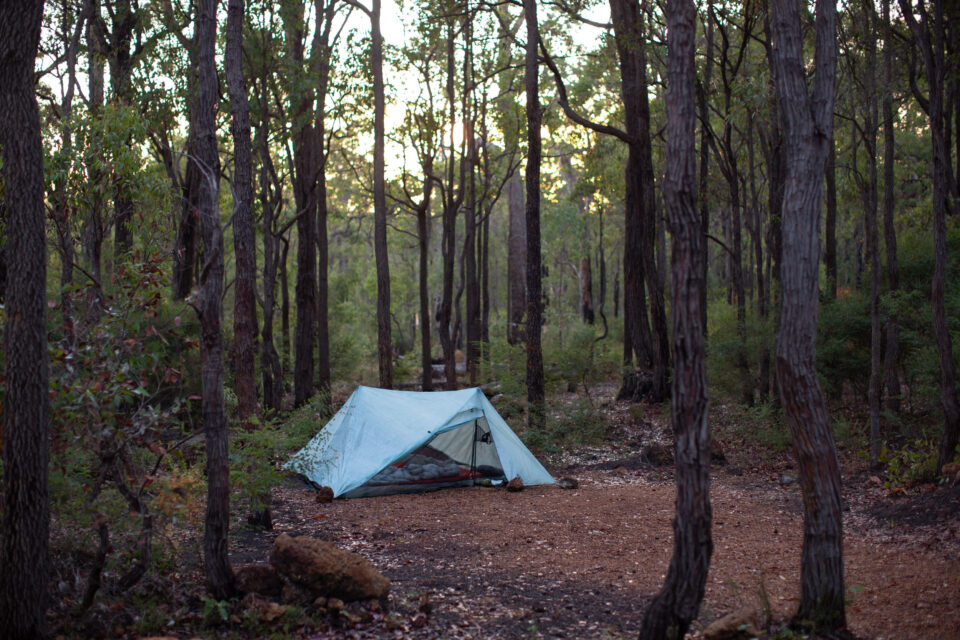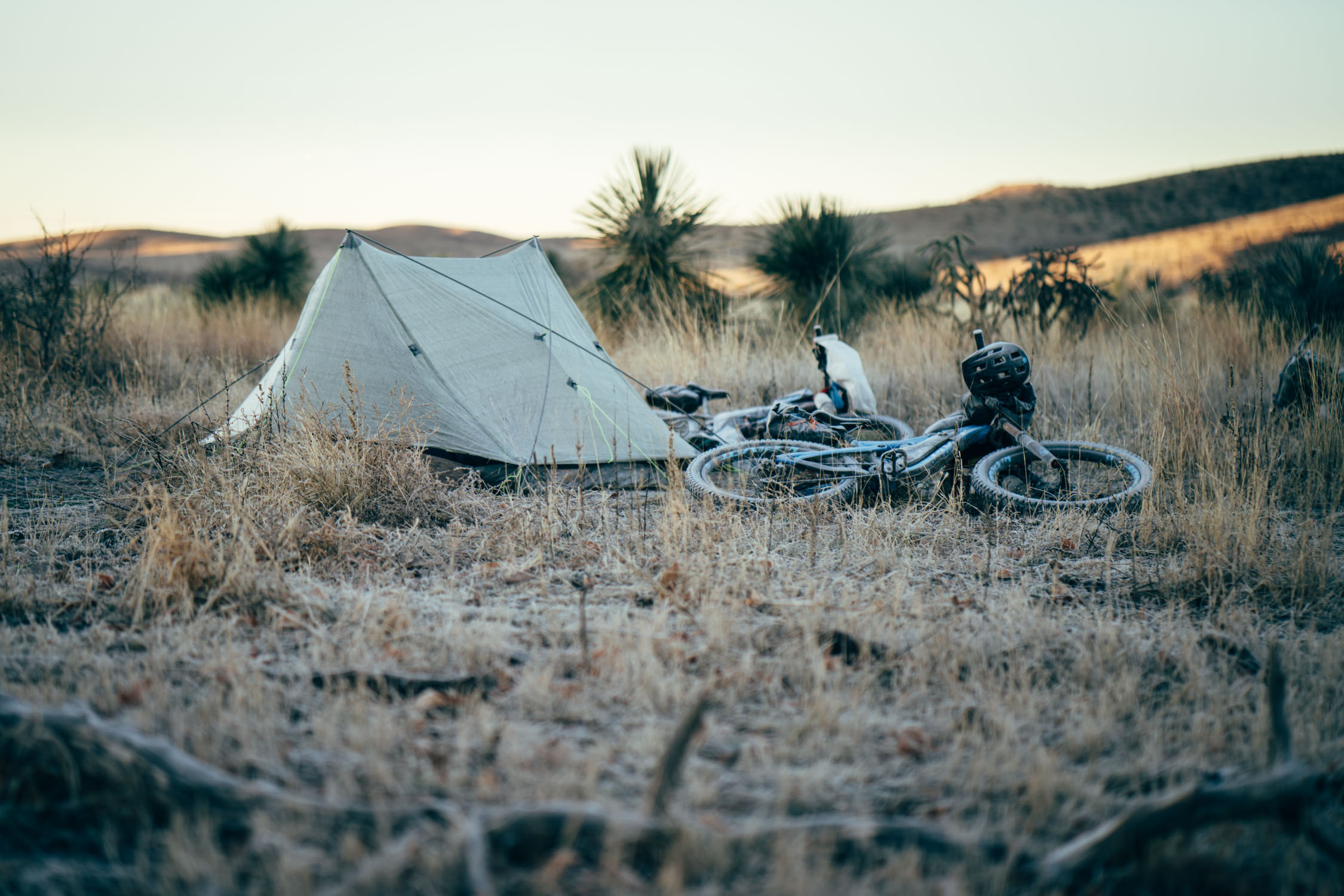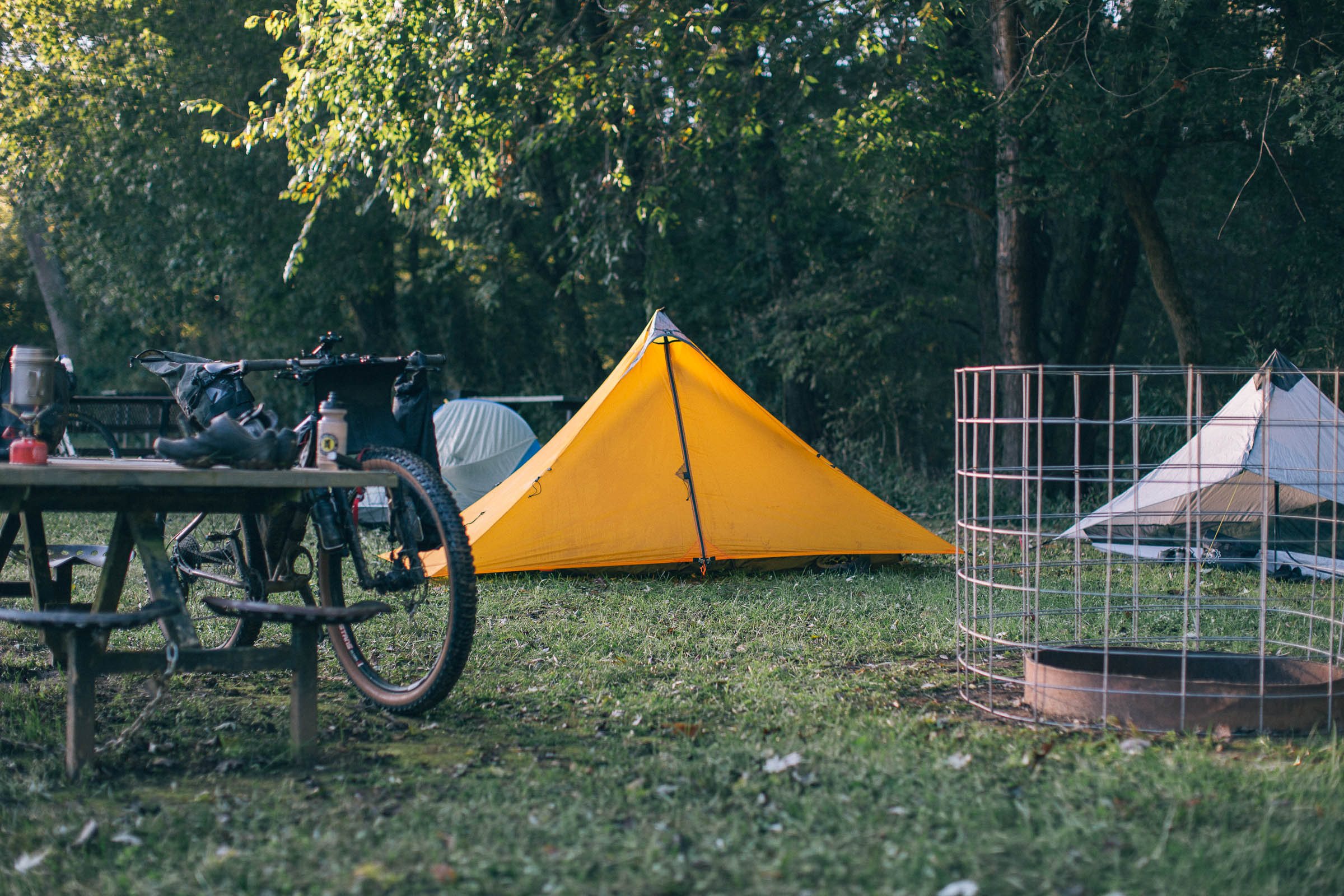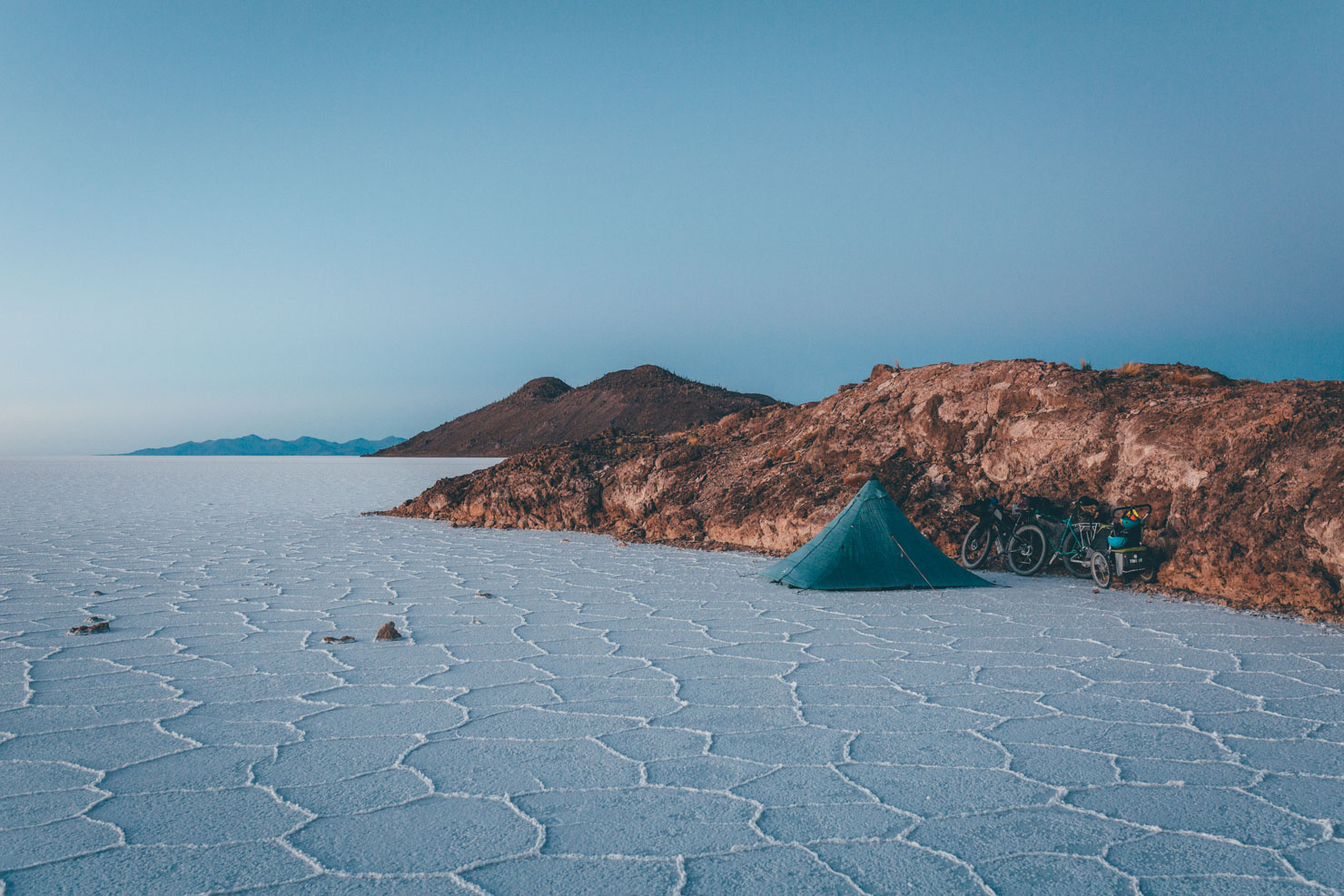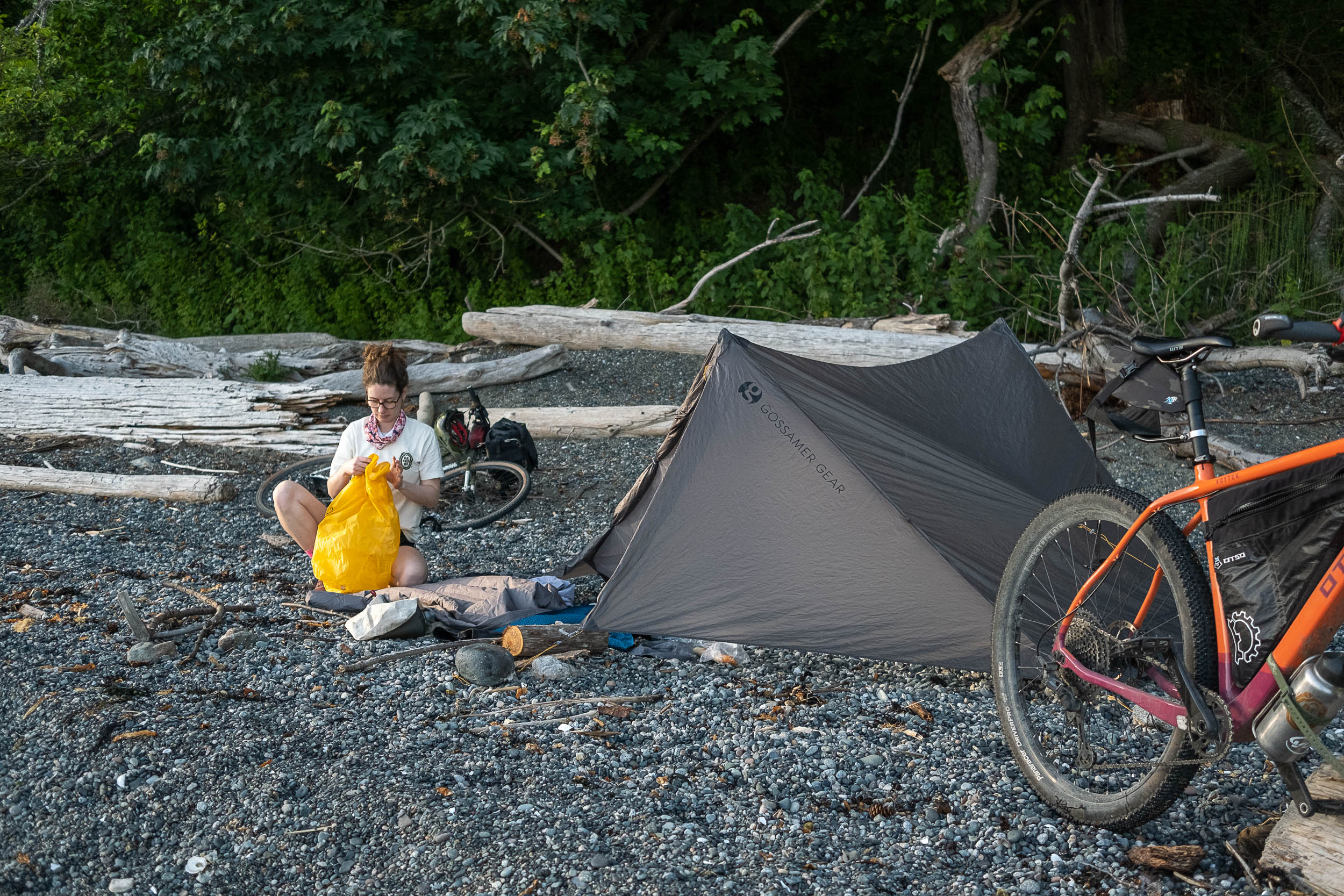Durston X-Mid Pro 2 Review: A Long-Term Home Away from Home
The Durston X-Mid Pro 2 is a two-person trekking-pole-style shelter that’s made from Dyneema composite, weighs just over a pound, and doesn’t skimp on key features. Miles and Emily have been busy testing one for the better part of a year to see how it stands up to bikepacking and as a temporary home while traveling abroad. Find Miles’ long-term review here…
PUBLISHED Jun 27, 2023
I’ll be the first to admit I’m usually not a fan of trekking-pole/non-freestanding tents. In most cases, I don’t find the weight savings or packability impressive enough to steer me away from a freestanding tent. The latter’s design is simple, easy to pitch, and usually has a fly and an inner body, rather than a single-walled design like most trekking-pole tents. However, when Durston released their X-Mid Pro 2 tent at the end of 2022, with its unique shape, impressively lightweight design, and easy setup, my interest was piqued.
Owned and operated by Dan Durston and his wife T, Durston is a two-person operation based out of Alberta, Canada. Long before launching his company, Dan has had a passion for the outdoors and pushing the boundaries. He hiked the 2,600-mile Pacific Crest Trail in 2014, completed the first yo-yo of Canada’s Great Divide Trail with T in 2017, and helped develop the high route extension of the Continental Divide/Great Divide Trail that continues up the Canadian Rockies. He harnesses these experiences and his knowledge of technical outdoor gear to develop his designs from scratch and then has his products manufactured in China at the same factory that makes tents for other well-known brands such as Locus Gear, Sampar’s, TarpTent, and Big Agnes.
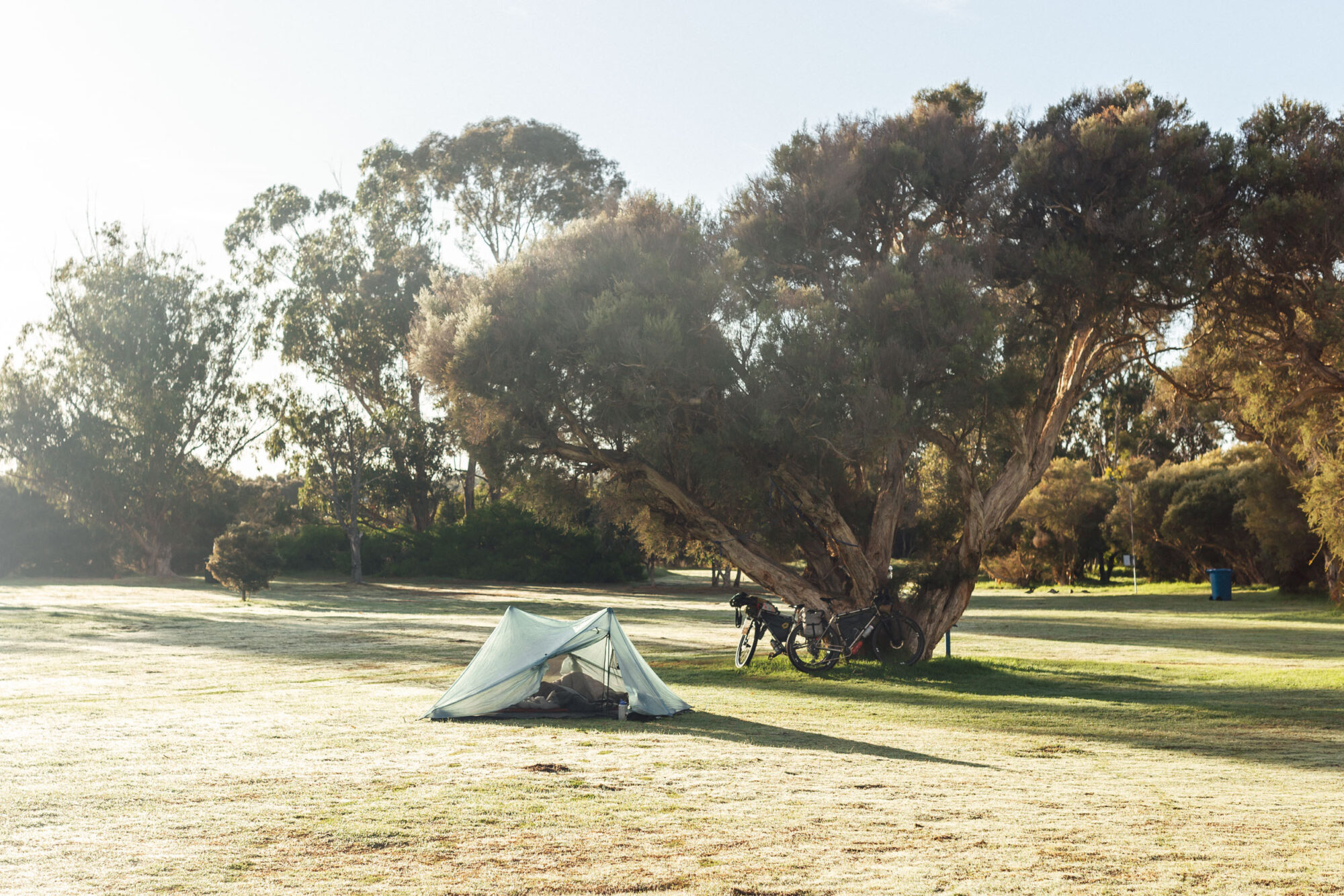
Durston’s flagship product was the X-Mid 1, which launched in 2018 and was an instant hit among backpackers and bikepackers. They followed that with a two-person model, the X-Mid 2, and then more recently the X-Mid Pro lineup made from Dyneema Composite fabrics (DCF). Their top-end shelters are currently the X-Mid Pro 1 and newly announced X-Mid Pro 2. We needed a place to sleep for our trip to Australia, and I was curious to see what all the ultralight backpackers were fussing about. A few days before our flight, the Durston X-Mid Pro 2 turned up at my front door. I set it up once in the front yard before packing it away with the rest of our gear.
The X-Mid 2 At a Glance
Just like the X-Mid 1, the X-Mid 2 comes in three variations. The standard X-Mid 2 has a polyester canopy and full mesh inner, the X-Mid 2 Solid has a solid inner to block snow, sand, and wind, and the X-Mid 2 Pro has the same mesh inner as the standard version but the canopy is made from Dyneema Composite–a high-end fabric known for its exceptional tear resistance, excellent strength-to-weight ratio, and the fact that it doesn’t absorb water like woven nylon or polyester. It’s expensive, but it’s a fantastic fabric for a lightweight bikepacking tent. The X-Mid 2 and X-Mid 2 Solid weigh in at 1,115 grams and 1,135 grams, respectively, for the shelter, stuff sack, and stakes. The X-Mid 2 Pro weighs an impressive 590 grams for the body and four stakes, which doesn’t include your required support poles.
The X-Mid Pro 2 I tested with all components weighed in at 1,017 grams (2.2 pounds), which includes eight stakes, two Z-Flick poles, a groundsheet, stuff sacks, and a few grams of Australian dirt. That number quickly drops by forgoing the groundsheet and the extra stakes, dropping closer to 800 grams (1.7 pounds). Durston uses a 20-denier fabric for the floor of the tent, which is a little higher than other ultralight tents, but still lightweight and prone to punctures, so I personally wouldn’t ever leave the groundsheet at home.
X-Mid Pro 2 Weight Breakdown
- Body + Stuff Sack: 571 grams
- Eight Stakes + Storage Sack: 82 grams
- Two Z-Flick Poles: 197 grams
- Ground Sheet: 167 grams
- Total: 1,017 grams (2.2 pounds)
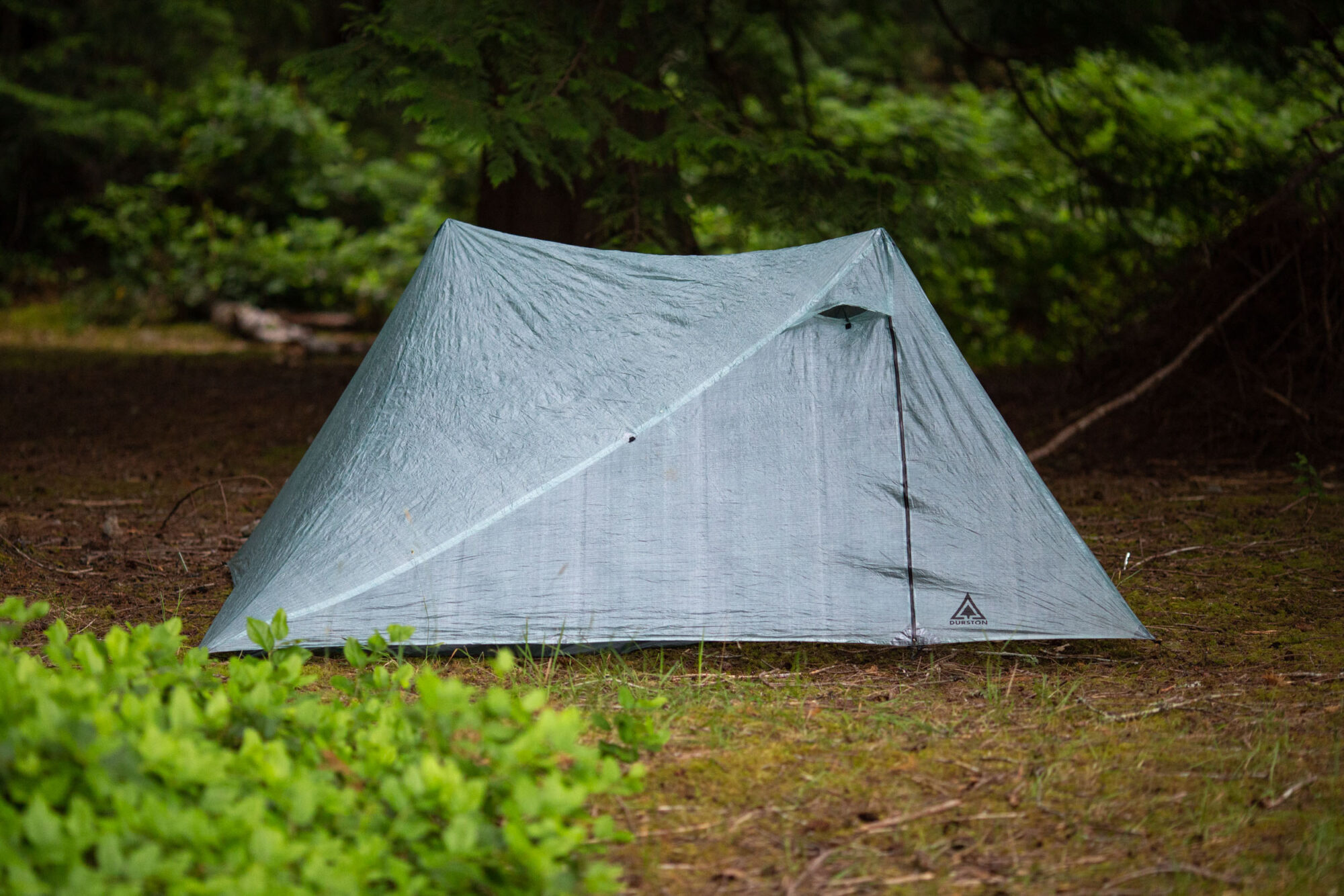
The entire X-Mid lineup uses Durston’s patented X-Mid geometry with twin-offset poles and a unique parallelogram internal/rectangle external shape that, according to Durston, provides best-in-class headspace, living room, and storm worthiness. The shelters rely on two trekking poles or optional segmented poles to set up, which are positioned halfway between the center and edge of the shelter. The ridgeline between the two poles and positioning of the sleeping area on the opposite diagonal provides lots of interior space and unobstructed doorways, and it can be pitched with just four stakes, although six is ideal.
Like most similar shelters, the X-Mid lineup is single-walled with a waterproof, full-coverage fly, mesh interior, 15-denier nylon floor, and zippered doorways. Both the two-person and single-person shelters have dual doorways and vestibules, dual vents, and high-end hardware including YKK AquaGuard zippers, magnetic door toggles, optional peak and side panel guylines for harsh conditions, and interior pockets.
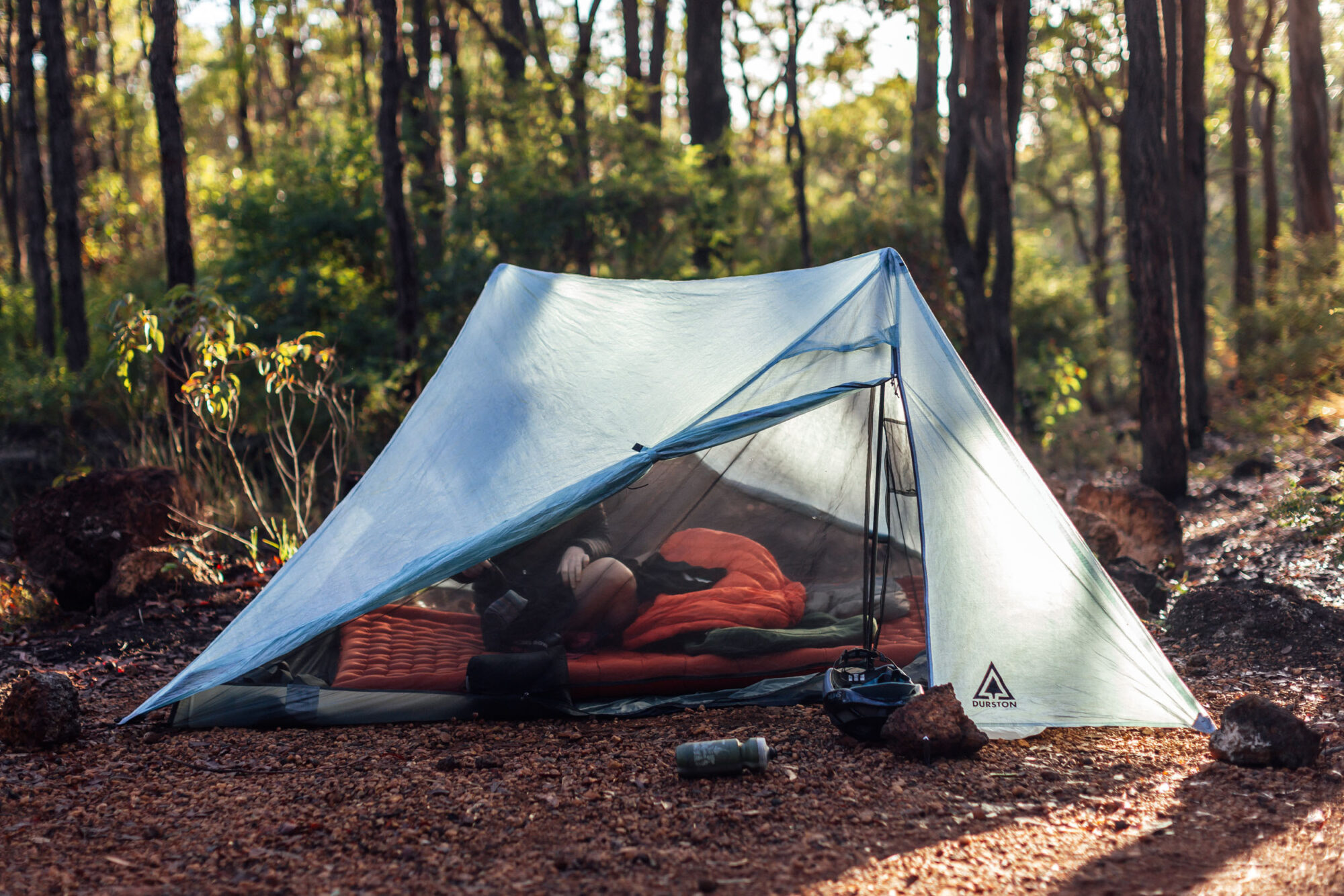
X-Mid Lineup
- X-Mid 1: $240 / 875 grams
- X-Mid 1 Solid: $270 / 905 grams
- X-Mid 1 Pro: $609 / 544 grams
- X-Mid 2: $300 / 1,115 grams
- X-Mid 2 Solid: $339 / 1,135 grams
- X-Mid 2 Pro: $679 / 590 grams
As you can see above, the X-Mid Pro 2 is substantially more expensive than the polyester versions, but that price comes with significant weight savings, durable DCF fabrics, and a premium hot-bonded construction, instead of taped, for clean and strong seams. The Zpacks Duplex, another trekking pole DCF tent, is perhaps the most comparable in terms of price and weight but uses the more traditional pole positioning and a symmetrical design. The Tarptent Stratosphire Li is the most comparable in terms of its shape but the poles aren’t offset as far, the overall weight appears to be a little higher, and it requires six stakes to set up. The Hyperlite Mountain Gear Unbound 2P also falls into a similar category but uses a traditional pole setup that sits directly in front of the doorways, requires more stakes, and doesn’t offer as much interior volume.
Two-Person DCF Trekking Pole Tents Compared
Below you’ll find a comparison chart of some similar Dyneema composite trekking pole tents. I’ve included interior floor dimensions, weight (body and stuff sack, no stakes or poles included), price, and a link to learn more.
| Tent Brand and Model | Floor (LxW) | Weight | Price |
|---|---|---|---|
| Durston X-Mid Pro 2 |
90×48″
230x122cm
|
1.2 lbs
571 g
|
$680 |
| Hyperlite Mountain Gear Unbound 2P |
90×48″
230x122cm
|
1.5 lbs
680 g
|
$700 |
| Tarptent Stratoshpire Li |
86×45″
218x114cm
|
1.7 lbs
793 g
|
$719 |
| Zpacks Duplex |
90×45″
230x114cm
|
1.1 lbs
525 g
|
$670 |
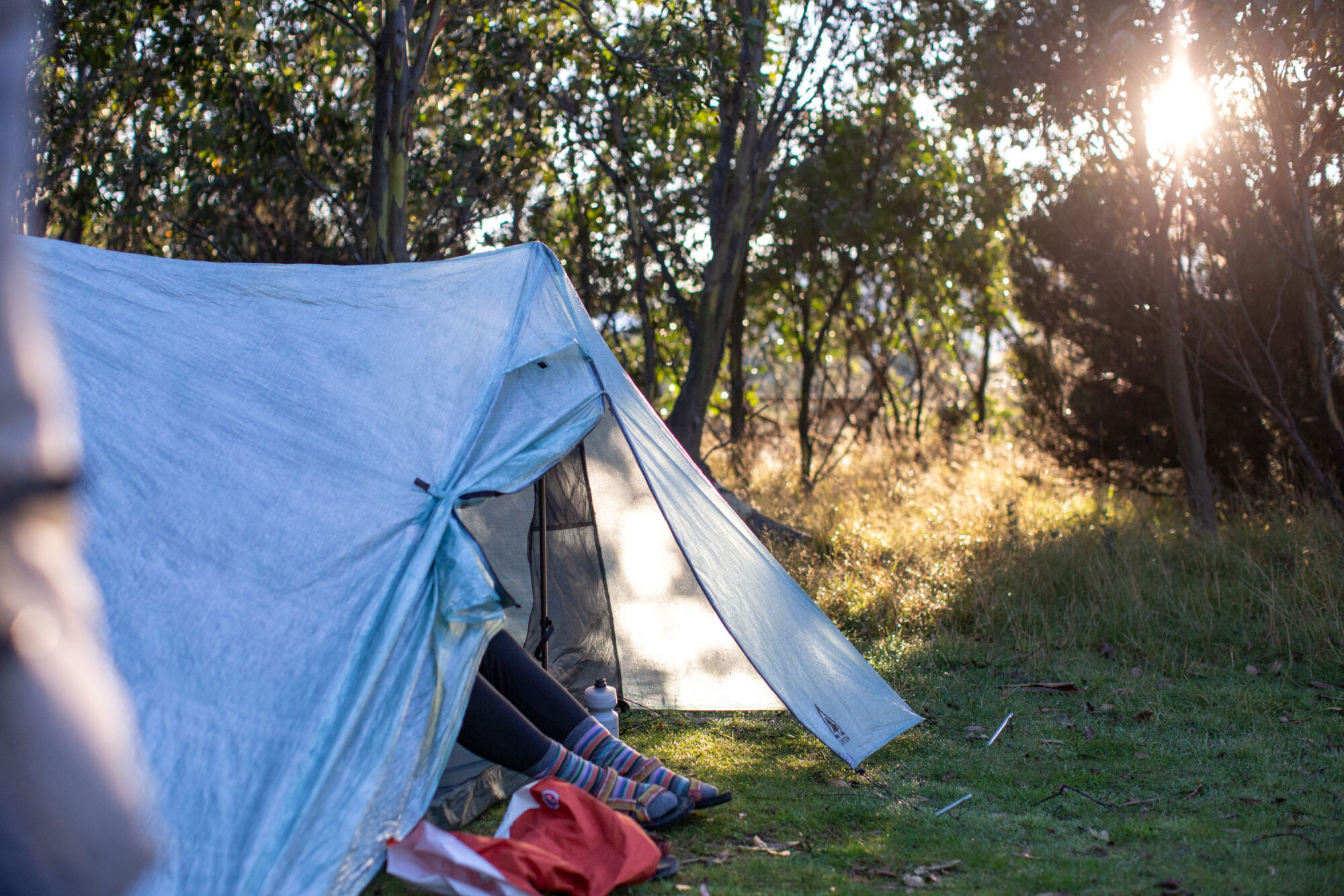
Setup and Takedown
One aspect that sets the Durston X-Mid 2 Pro from other trekking pole shelters is its pitch and setup. Since it only requires four stakes, the tent is pegged out as a rectangle from each corner, which makes getting a proper pitch easier than other tents in this category. With a nice rectangle and four pegs in place, the corners can be snugged up using the integrated cord tensioners. Duston sent along their optional Z-Flick Tent Pole Set, which replaces two trekking poles that support each side of the tent. The rounded end (or trekking pole handle) sits in either peak, and the bottom of the pole matches up with a small elastic loop at the base of the doorway. With some practice, a proper setup can be achieved in just a few minutes.
Once pitched, there are a few options to adjust the tent depending on the conditions and level of ventilation required. The corners are meant to sit low to the ground and offer full protection from rain, but they can be loosened and the poles lengthened to create more airflow around the base of the tent and the mesh interior. Both doors can also be staked out for better zipper function, and vestibule area but can be left un-staked when space is limited. Like most single-walled DCF tents, condensation is almost always an issue, so I typically had the doors staked out and left unzipped for proper ventilation. There are two small vents above each door with small struts to assist with airflow. The struts are fixed at one end and have a small velcro tab on the other, allowing the vents to be propped open or completely closed in harsh conditions.
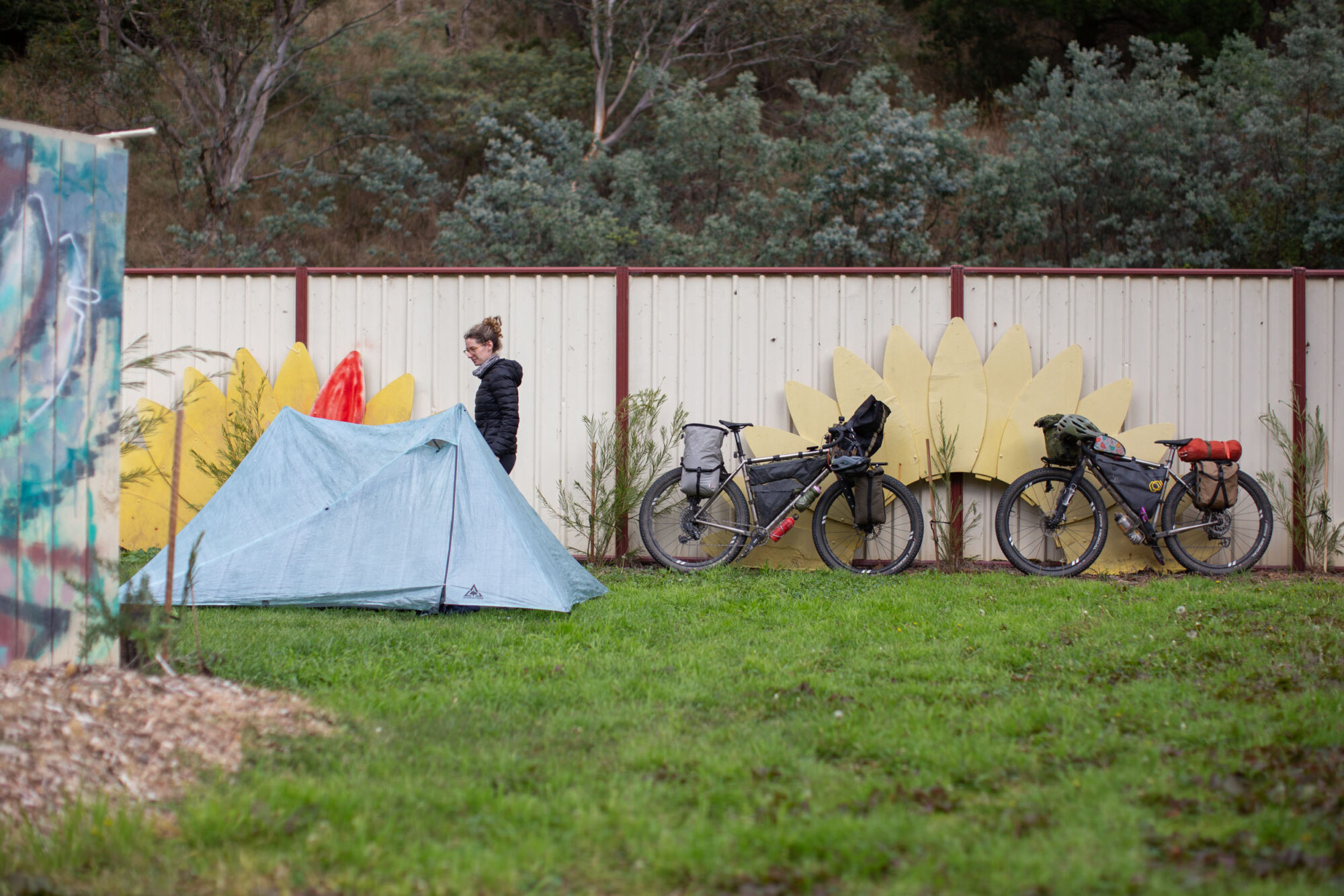
The X-Mid Pro 2 has a bathtub-style floor that rises a few inches off the ground before transitioning into the mesh interior. Unlike most tents, it forms a parallelogram shape that actually positions the sleeping area on a diagonal inside the tent. While it might look like this limits the amount of usable space inside the tent, it’s actually the opposite. The X-Mid 2 Pro is in a league of its own when it comes to interior space and weight.
Durston claims the X-Mid Pro 2 packs down to 11×5” (27x12cm) within the included stuff sack. Because DCF fabrics can delaminate over time, they suggest rolling the shelter instead of stuffing it to prolong its lifespan. I found it easy to roll the shelter inside the optional groundsheet along with the carbon poles and stakes to make a Durston burrito and still fit it into the stuff sack without any issue. Stuffing the shelter into a ball would guarantee a much smaller pack size, but that’s not an ideal option with fancy DCF tents.
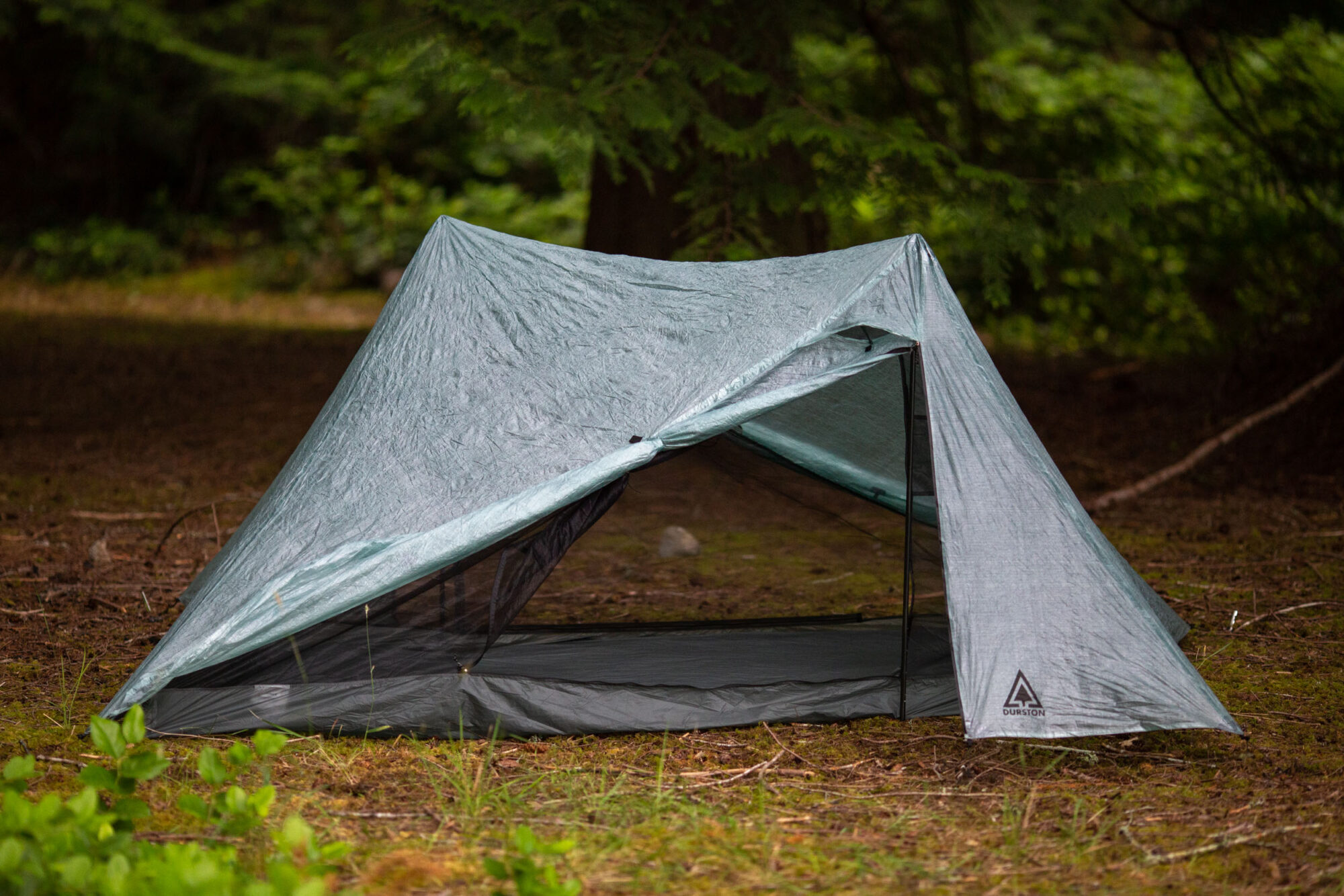
A House is not a Home
A 2,000-kilometer bikepacking tour in Australia earlier this year meant I’ve spent more time sleeping in a tent than ever before. Although this length of trip was a first for Emily and me, there’s something really special about getting into a groove with a camping setup and the sense of familiarity that comes with sleeping in the same space each night. The few times we treated ourselves to “real” beds, we were eager to get back out under the stars and into the X-Mid Pro 2.
A lot of this comfort has to do with the unique shape and spaciousness of the tent. The generous 48” floor width left enough room for us to bring along a double-wide Big Agnes sleeping pad, a first for us, and a real game changer for a comfortable night’s sleep. We also opted to sleep head-to-toe so both of us could be positioned with our head under a peak, which made the interior feel even more spacious. If sleeping by your tent mate’s toes isn’t what you’re into, Durston says it was designed to fit two wide tapered pads oriented the same way.
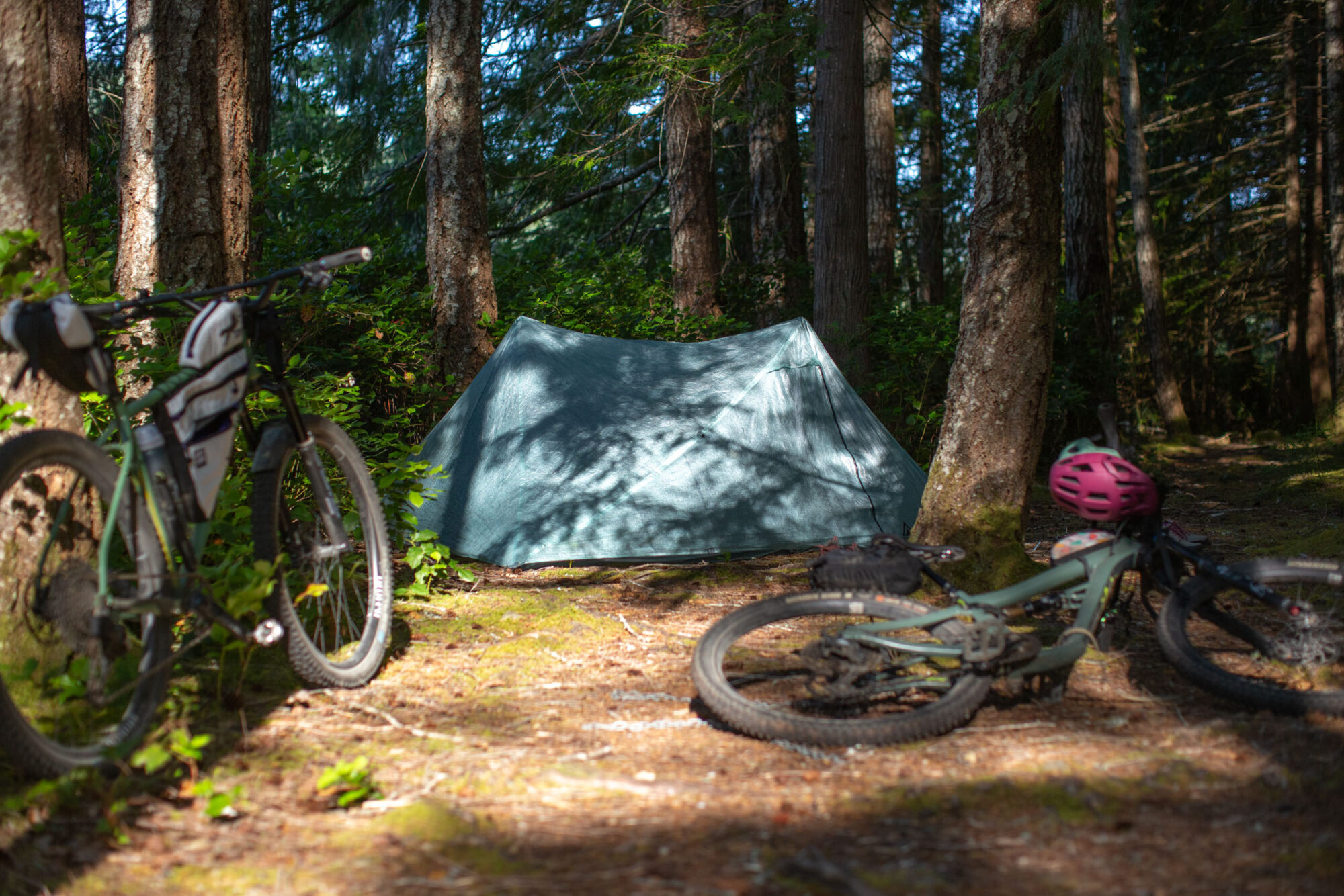
Besides the benefits of having the offset poles and high points inside the tent, which both add to its livability, there are several other details that didn’t go unnoticed. First, with a proper setup, the tent was relatively easy to get tensioned correctly, which can often be a bit of a puzzle with trekking-pole tents. A good pitch means better stability in the wind, improved drainage in the rain, and proper ventilation, the latter being an important factor to consider with single-walled tents. Because of how offset they are from the center, we appreciated not having to worry about knocking over the carbon support poles when getting in or out of the tent. It was also nice to see proper tension throughout the doorways and interior mesh, making the zippers easy to operate and limiting the amount of drooping fabric, which is always a tell-tale sign that something isn’t quite right.
We liked having the interior pockets raised up off the ground, and this proved especially useful for Emily as she was always nervous about where to stash her glasses at night. While the two vestibules at either doorway weren’t massive, they were plenty spacious for us to hide our shoes, helmets, and hip packs during the night. The unique offset floor also meant we both had some extra room at one corner of the tent for clothing or personal items, and this space was exaggerated because our giant two-person sleeping pad only really fit directly in the middle of the tent.
Like most single-walled DCF tents, condensation was a constant issue for us. During the first leg of our trip, temperatures dropped to just above freezing most nights, and we saw lots of rain and humidity. These were challenging conditions as we wanted to keep the main doors zipped shut, but that only increased the amount of condensation buildup on the inside of the shelter each morning. I’m happy we packed two small camp towels, because I quickly got into the habit of clearing out the tent and lying on my back inside to wipe up all the condensation on the interior walls. It was significant, and for someone who spends most of the year in a cool, humid environment, it could be a deal breaker. The best case scenario is that it’s not too windy or rainy to leave the doors fully unzipped during the night, or you master the art of pitching the tent to raise it more off the ground to increase ventilation.
Just like the tent, Durston’s Z-Flick poles are also a pleasure to use. According to Durston, at just under 100 grams each, they are the lightest adjustable carbon poles on the market. They use a large diameter tubing, premium carbon fiber construction, and external ‘flick’ style adjusters that are quick and offer continuous adjustment. There are five sections and they pack down to just 12” long, which is great for bikepacking, and the included velcro loops ensure they don’t rattle around all day inside your bag. Durston also claims their poles are compatible with more tents because they have two different tip styles (point or handle), meaning they will work with virtually any type of trekking-pole style tent.
Due to the X-Mid’s consistent exterior wall slopes and relatively moderate angles, it does a good job in windy conditions. It’s nice not having to worry about how the tent is set-up relative to the wind, as the angles are close to equal on all sides. If conditions worsen, there are multiple additional guy line points that further strengthen the setup. The DCF construction also assists in windy conditions because it doesn’t sag when wet and won’t retain moisture, allowing its shape to remain consistent and mostly taught.
Pros
- DCF construction is lightweight, durable, and waterproof.
- Minimal but doesn’t sacrifice key features like bug protection, a full coverage fly, pockets, and magnetic door keepers.
- Packs down small, even without stuffing.
- Z-Flick tent poles pack down to just 12” long, making them easy to stuff inside with the shelter or into a frame or handlebar bag.
- Lots of interior space thanks to the unique parallelogram shape, offset poles, and dual peaks.
- Just four stakes needed for a basic pitch, although six are ideal when using the doors.
Cons
- DCF tents are expensive. Thankfully, the polyester version of the X-Mid and X-Mid 2 share many of the same specs (but they’re heavier and less durable).
- Condensation can be a real issue in humid and cold climates. Pack an absorbent towel and limit the amount of gear you bring inside the tent at night.
- Since DCF doesn’t like to be stuffed, the pack size isn’t as small as it could be, and the resulting packed stuff sack isn’t very tight.
- Capacity: Two-Person
- Material: 0.55 oz Dyneema, 15D Sil/PEU nylon
- Weight: 1,017 grams (2.2 pounds) – complete kit
- Place of Manufacture: China
- Price: $679 USD (body + stuff sack only)
- Manufacturer’s Details: DurstonGear.com
Wrap Up
If you’ve made it this far, you’ve likely figured out I have a love/hate relationship with non-freestanding tents. Mix in the added complexity of a single-walled and DCF construction, and I often start questioning whether the pros are worth the inherent cons. Truthfully, I’ve never had great experiences using this style of shelter, but on paper, the Durston X-Mid design and shape looked different, and I’m happy I took a gamble and gave it a shot.
It turns out that Durston’s lofty claims, especially compared to some other great shelters, are surprisingly valid. After some practice, the X-Mid Pro 2 is simple to set up, tear down, and live in. The offset poles and internal parallelogram shape are one of its greatest strengths, effectively increasing the tent’s inside space while limiting any funky external angles that might catch wind or rain. The fact that it only requires four stakes and that Durston designed a highly packable and functional carbon pole kit to accompany it are just bonuses. In all, there’s a lot to like about it.
The X-Mid Pro 2 isn’t perfect, however. Condensation build-up proved to be an issue for us. Although this isn’t specific to the X-Mid 2 Pro and is a problem with most, if not all, single-walled trekking pole tents, it’s something worth considering depending on what conditions you normally camp in. In my eyes, the design and functionality of the tent outweigh the annoyance of having to wipe down the inside most mornings. If carefully rolling up the tent due to its DCF construction isn’t your thing, picking up the stuffable polyester version is also a realistic option. It’s heavier, but I would bet it would be easier to pack down smaller than the pro version.
To summarize, the Durston X-Mid Pro 2 proved to be a fantastic option for our six-week bikepacking trip in Australia. Once we got the hang of it, it felt more like a home than any other tents Emily and I have used together.
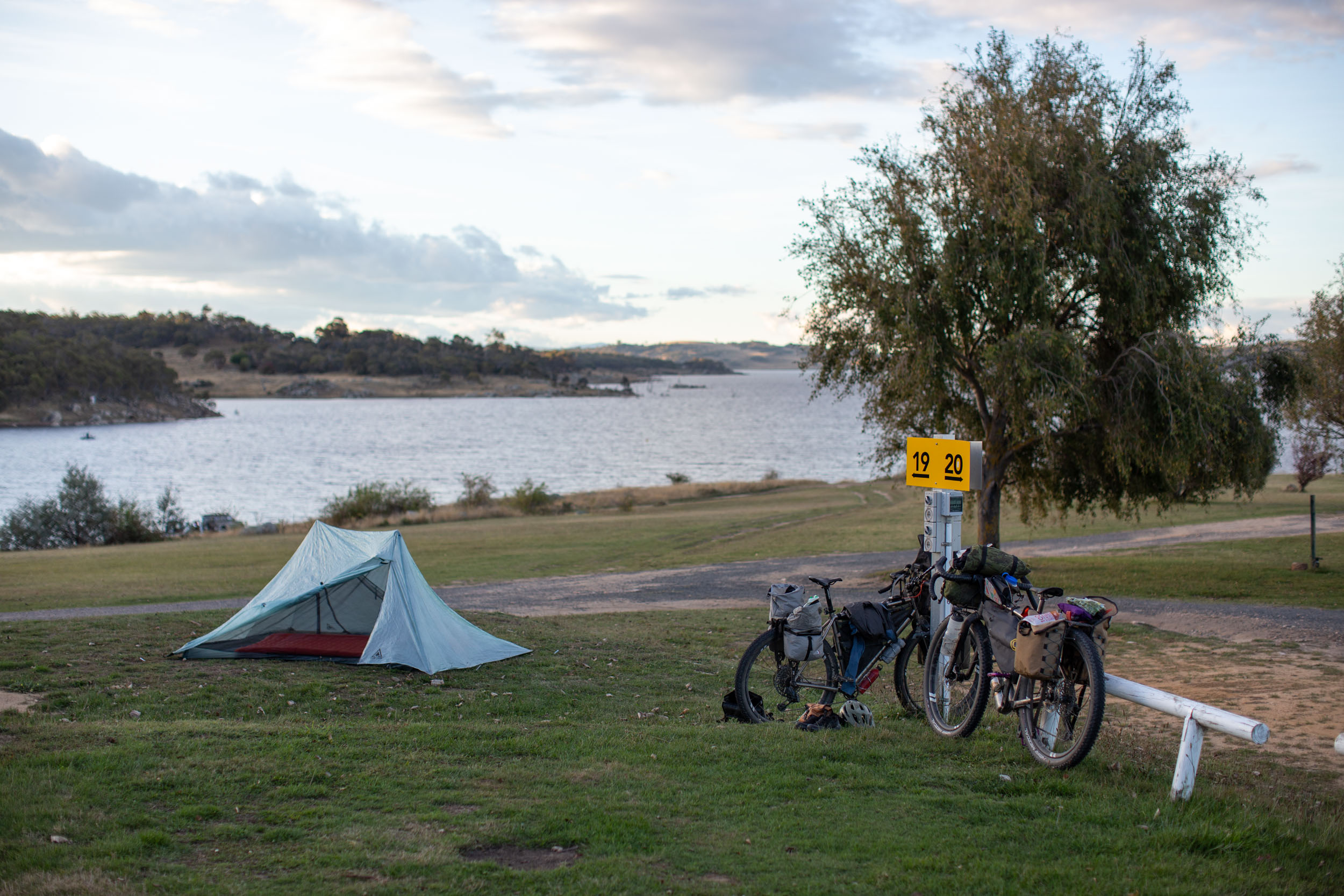
Further Reading
Make sure to dig into these related articles for more info...
Please keep the conversation civil, constructive, and inclusive, or your comment will be removed.







